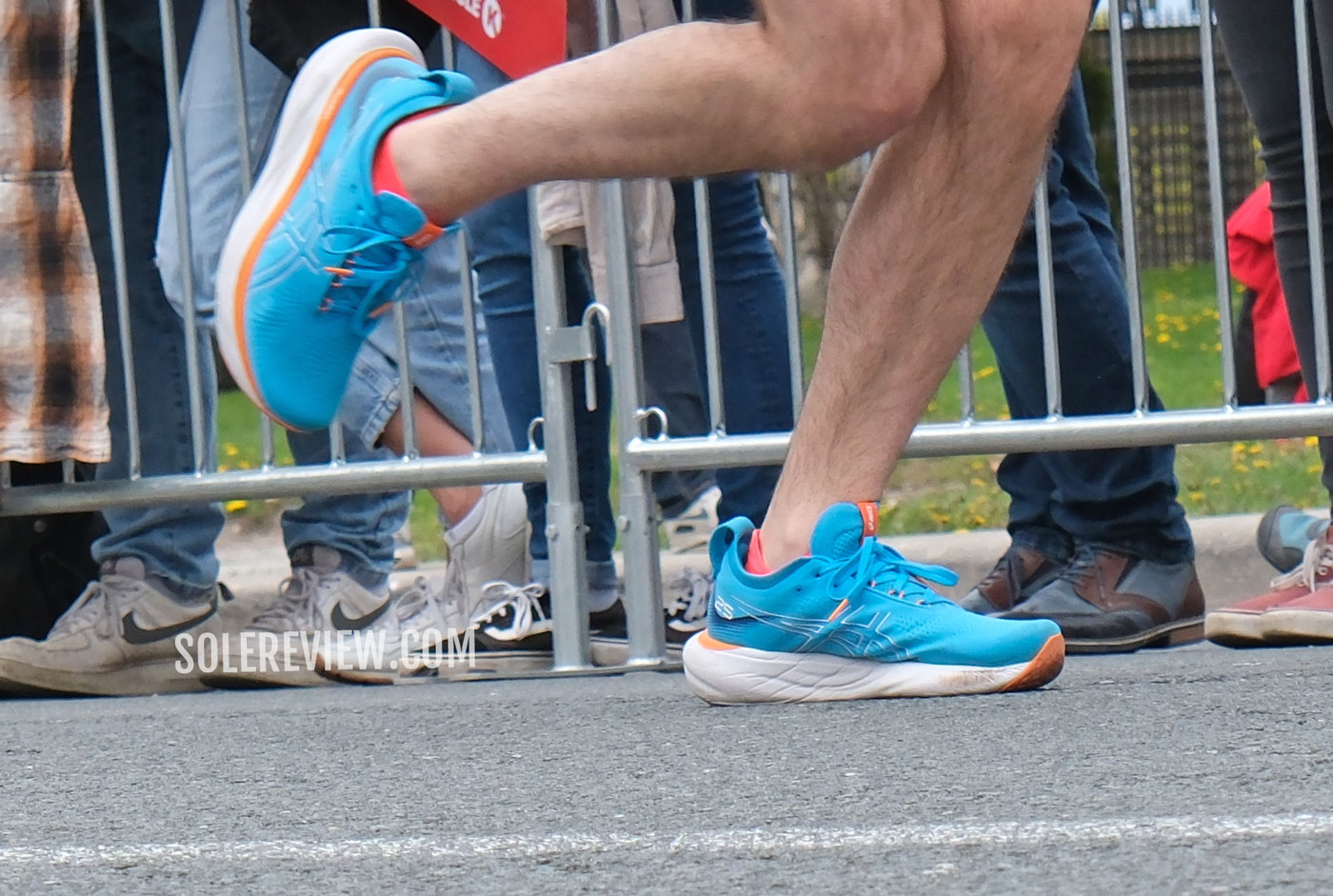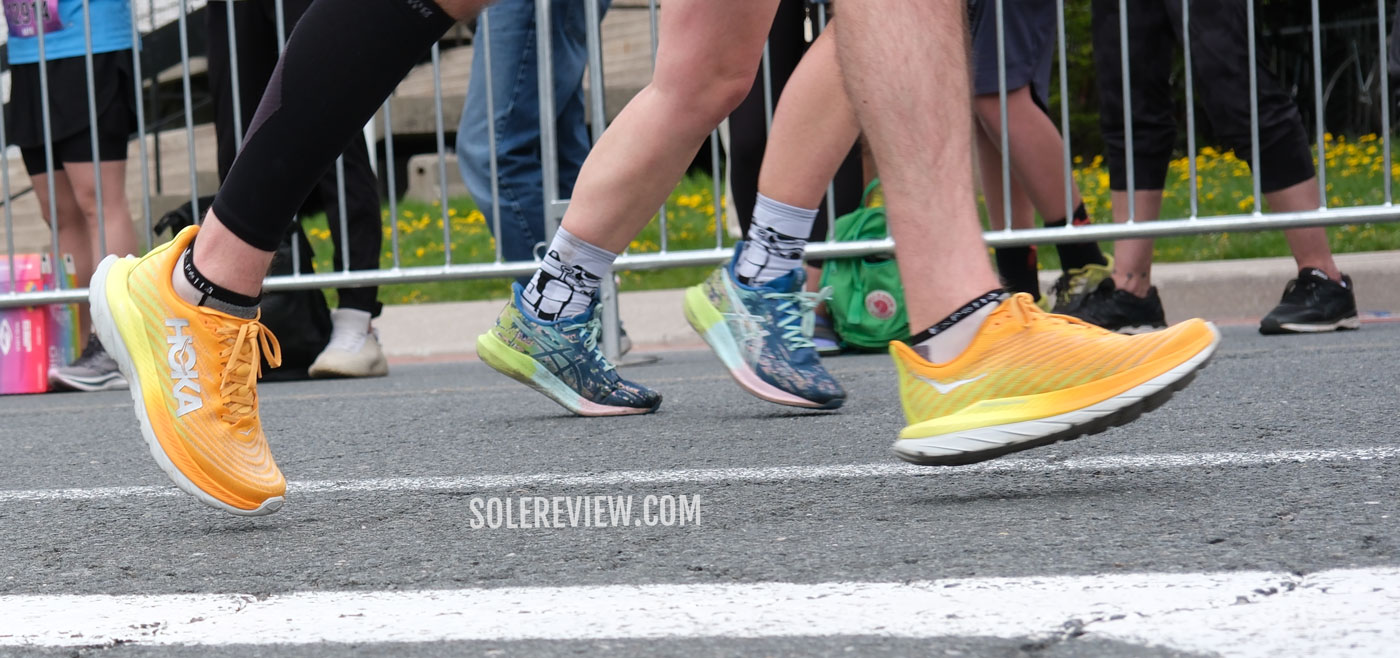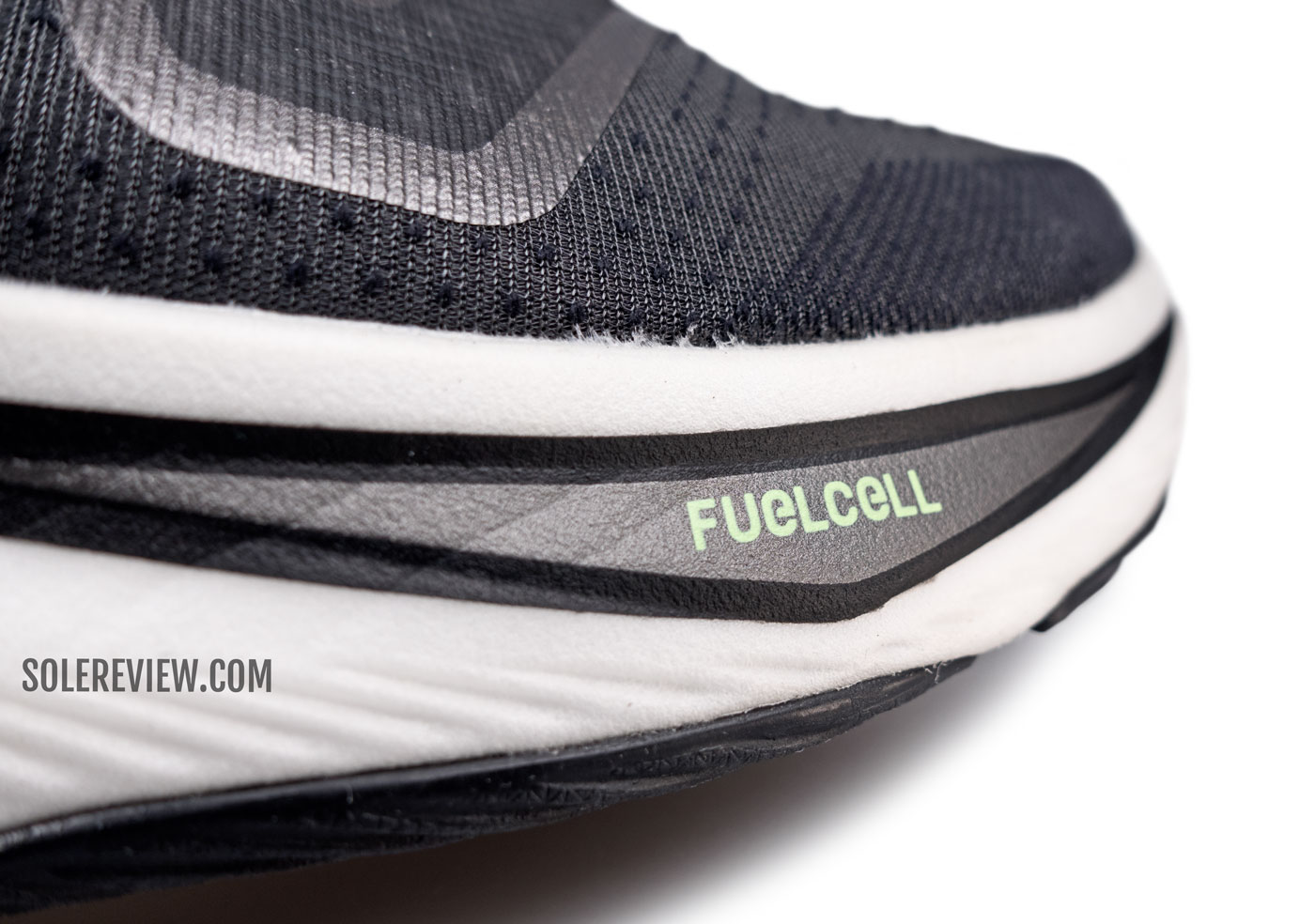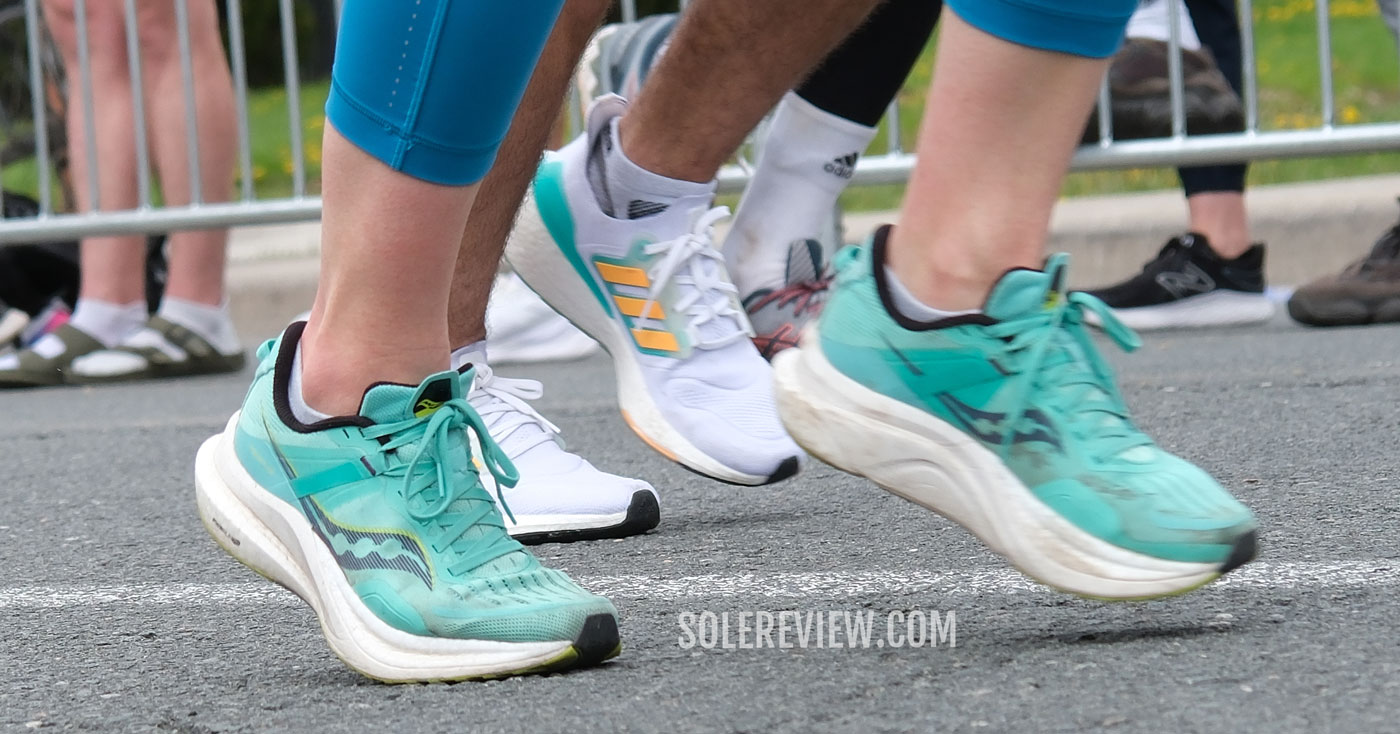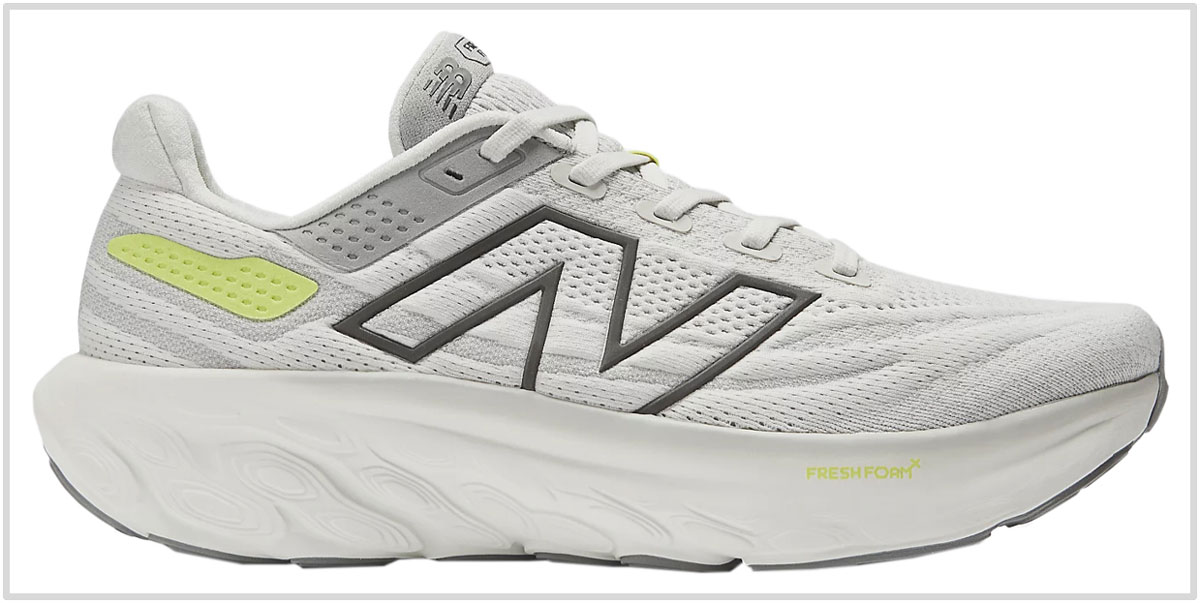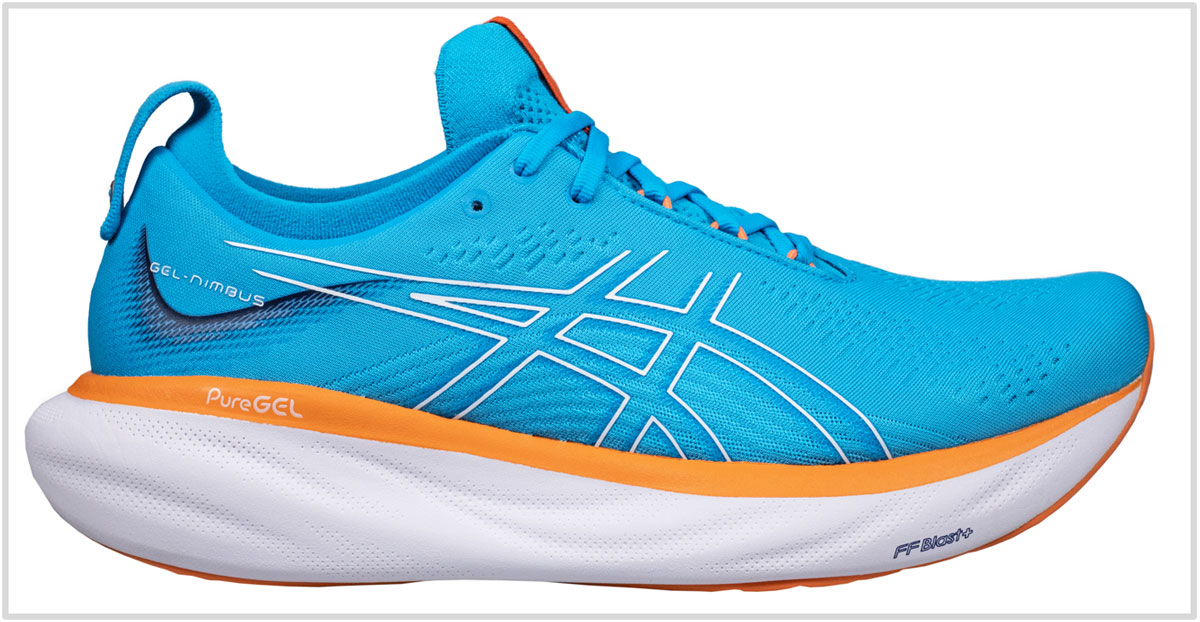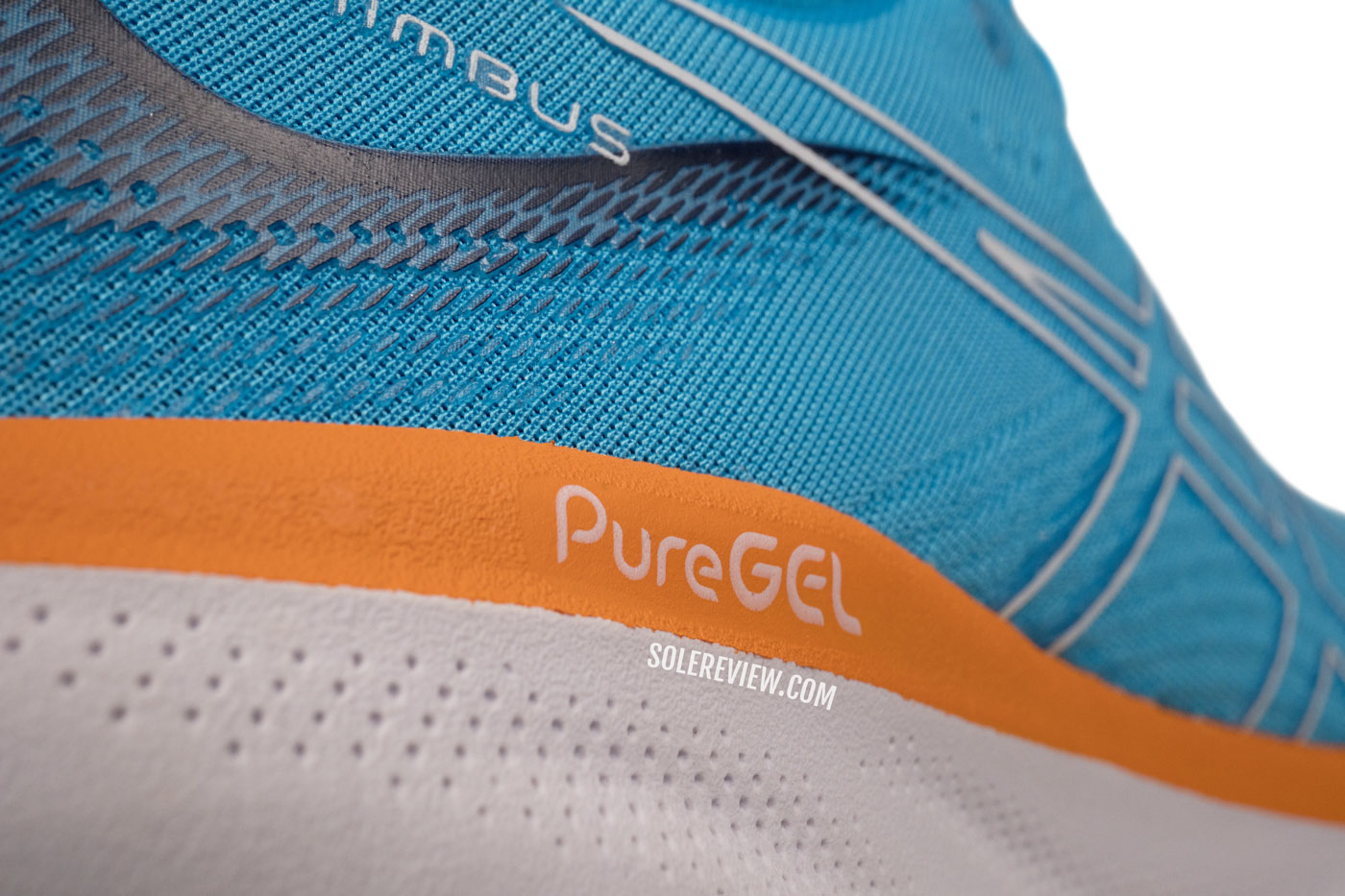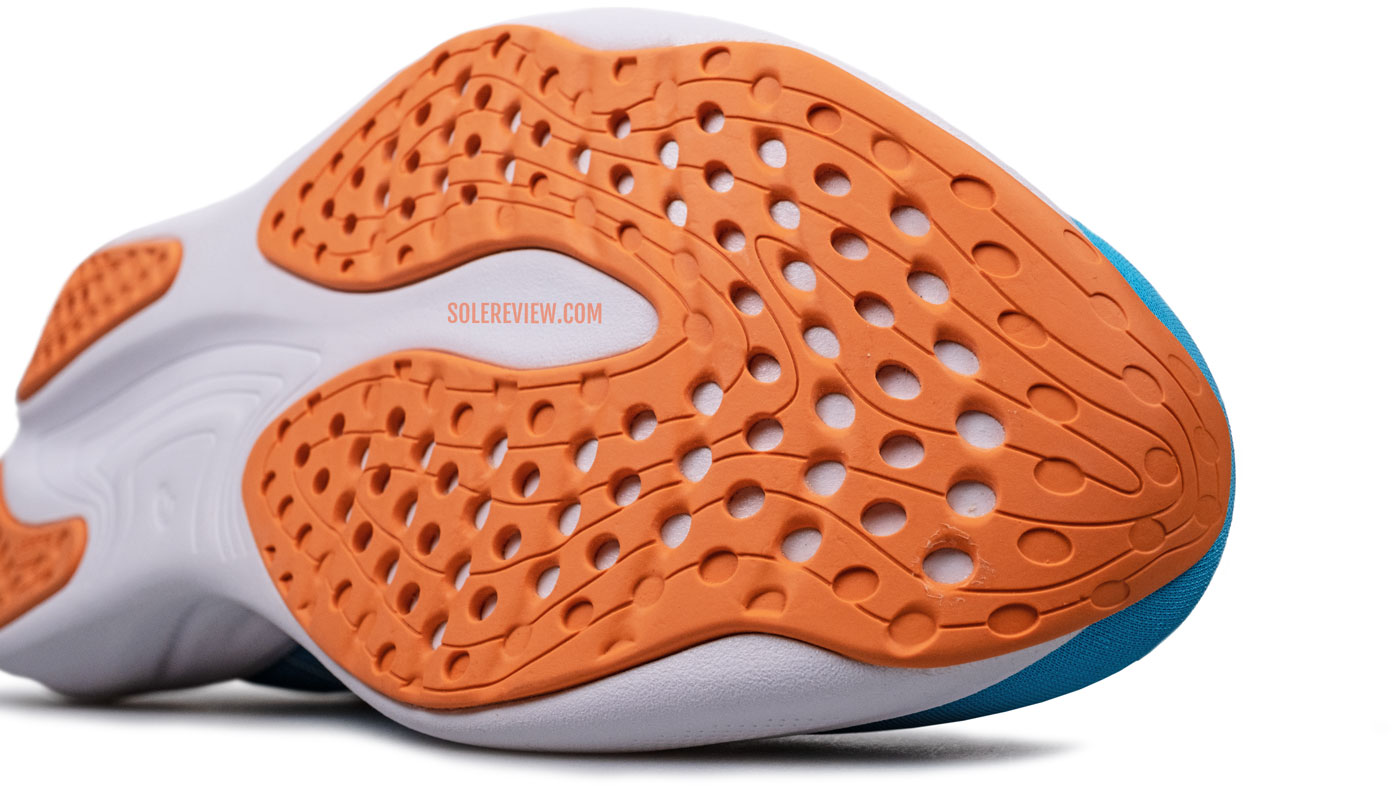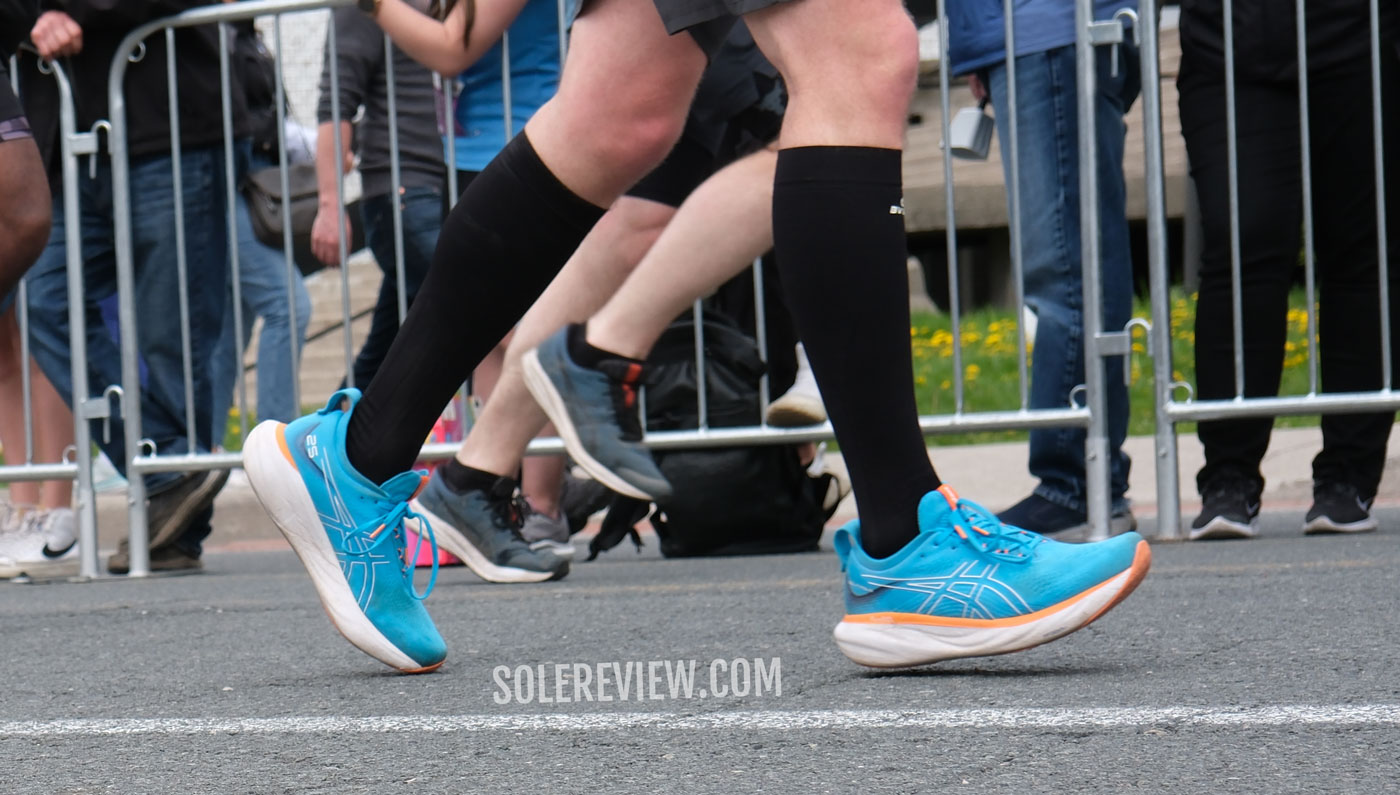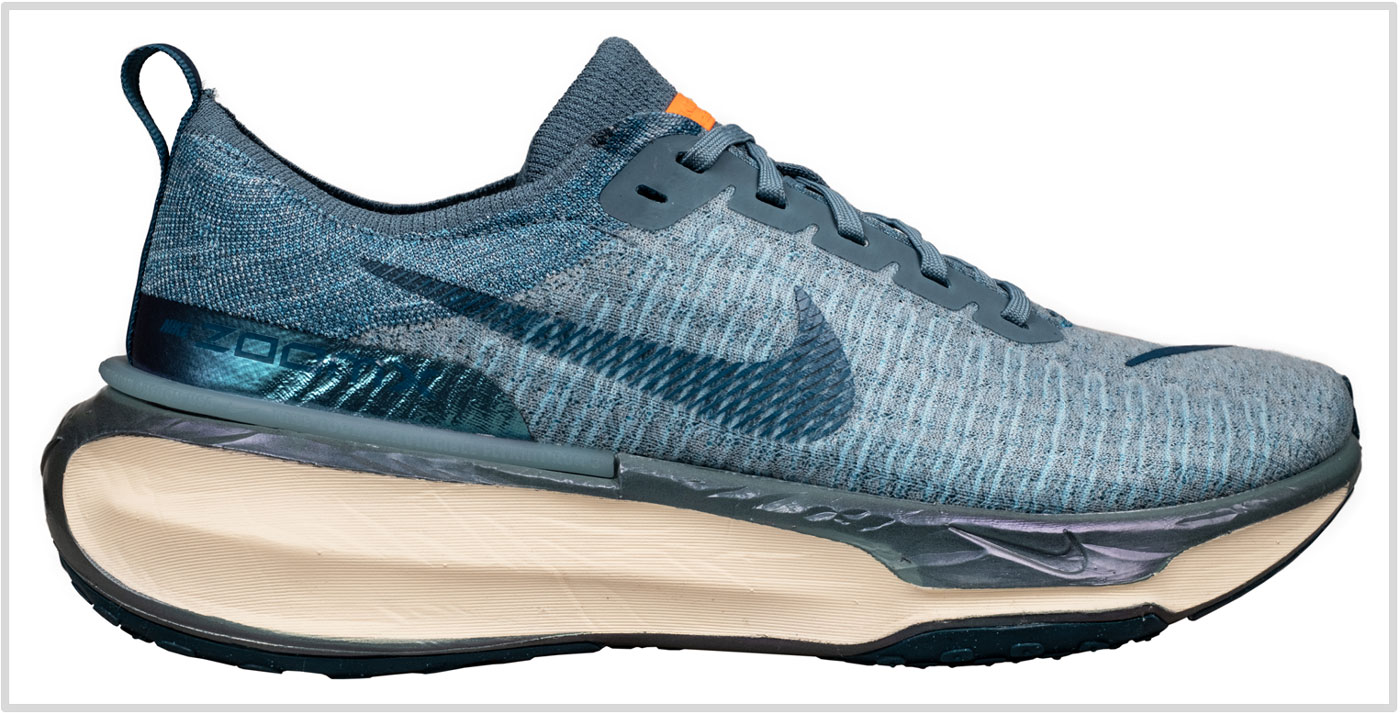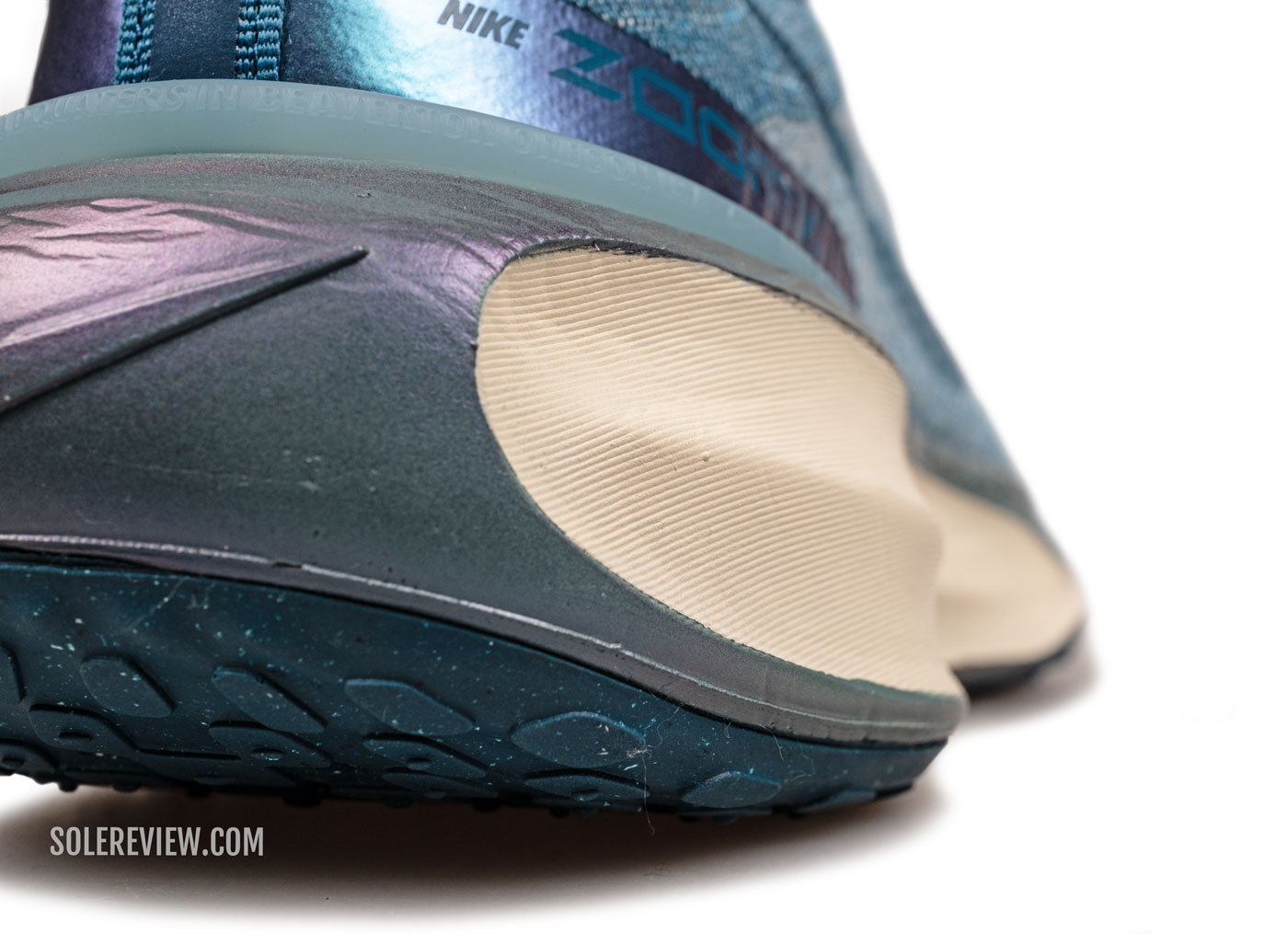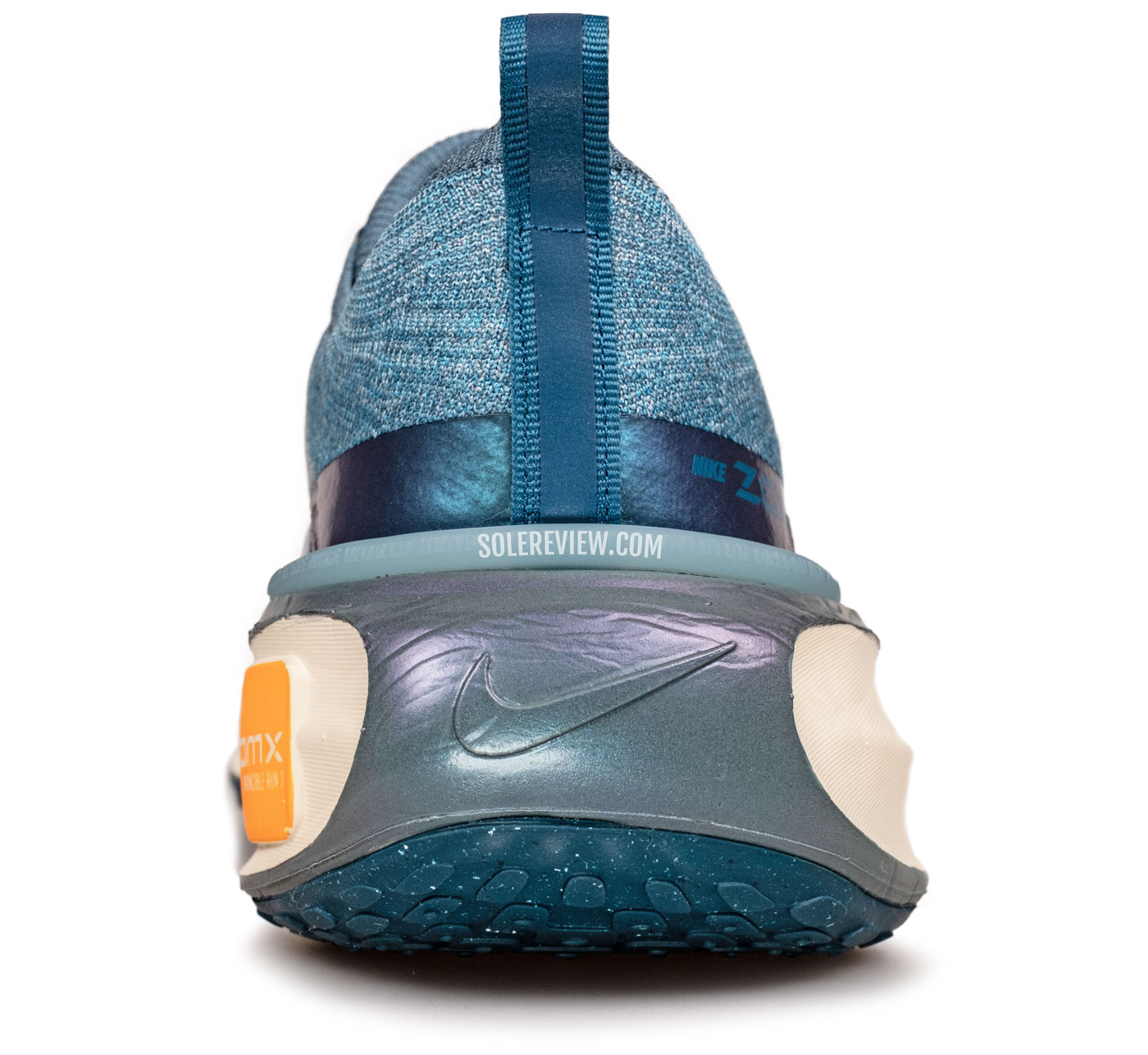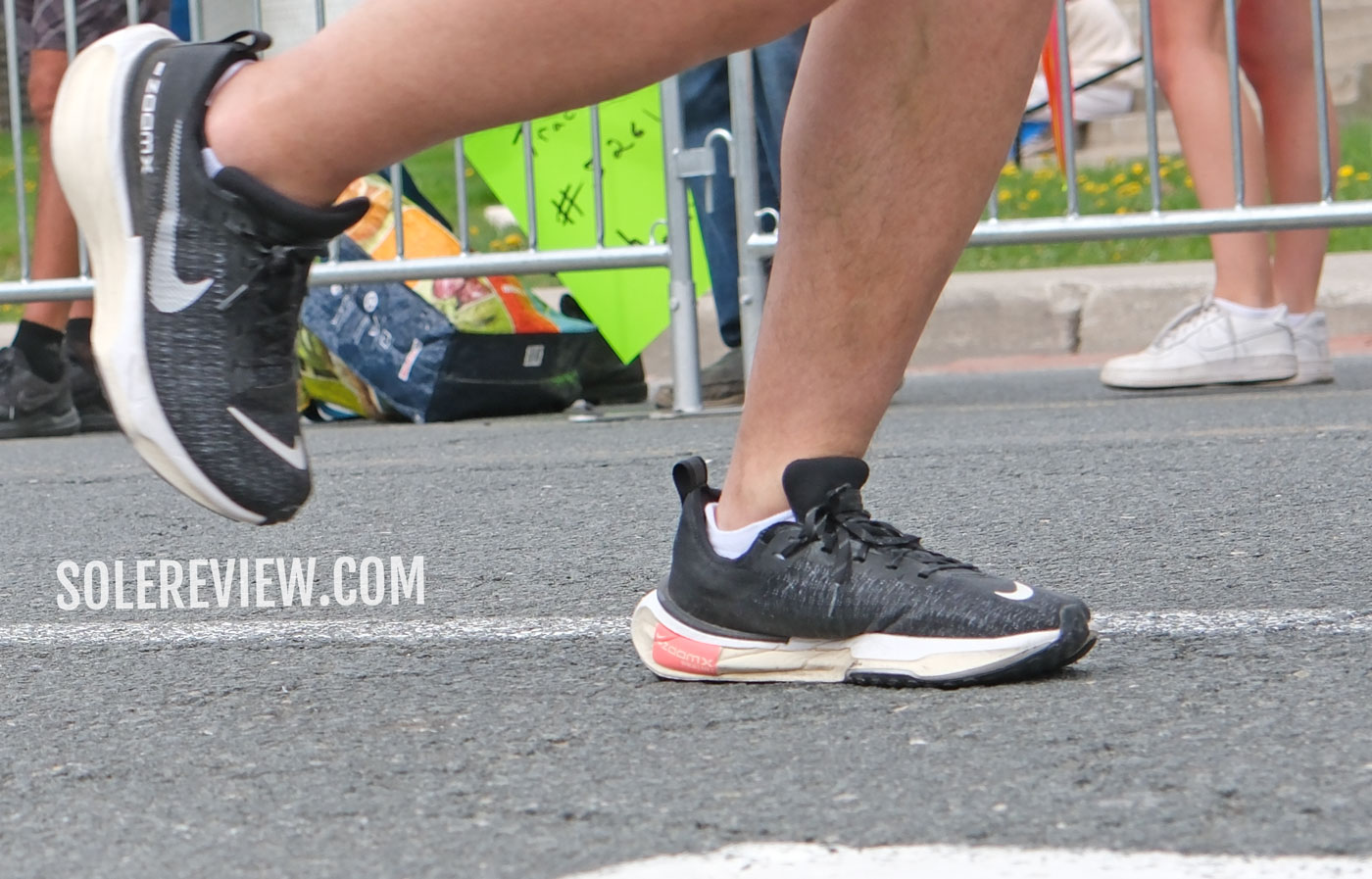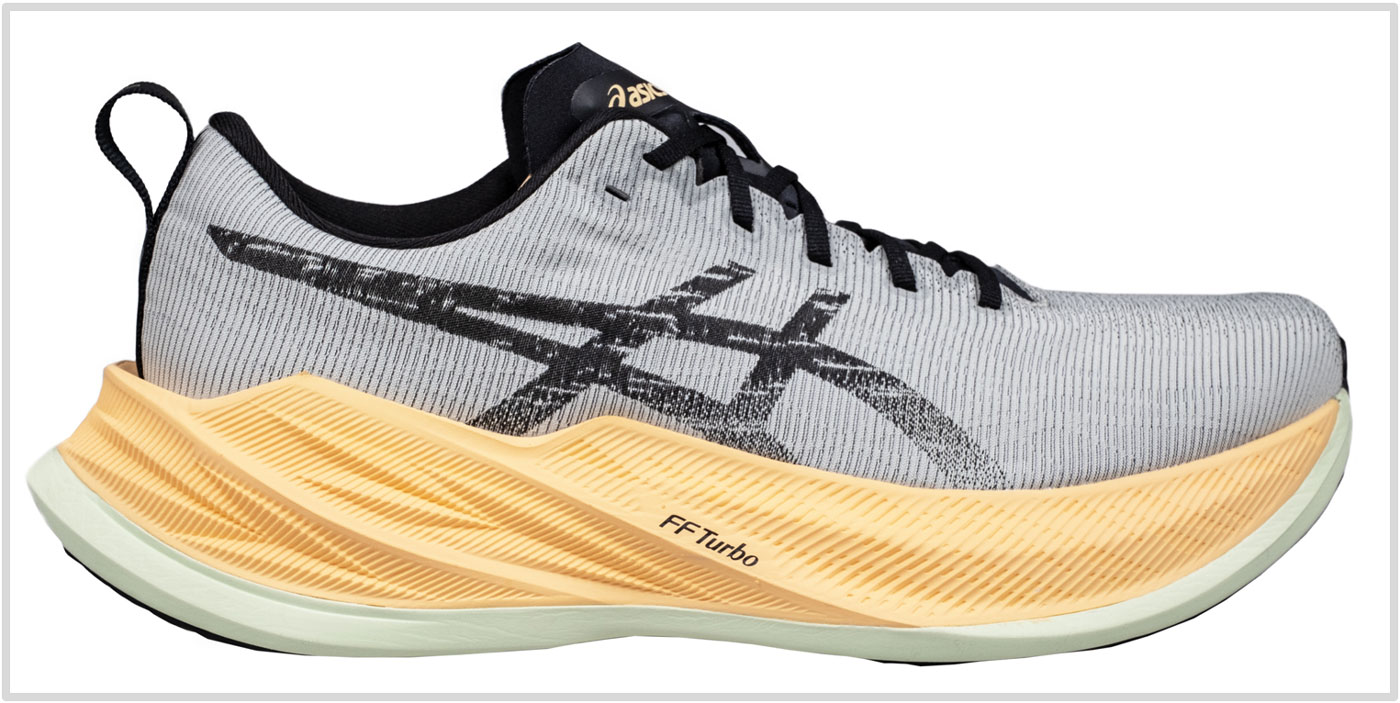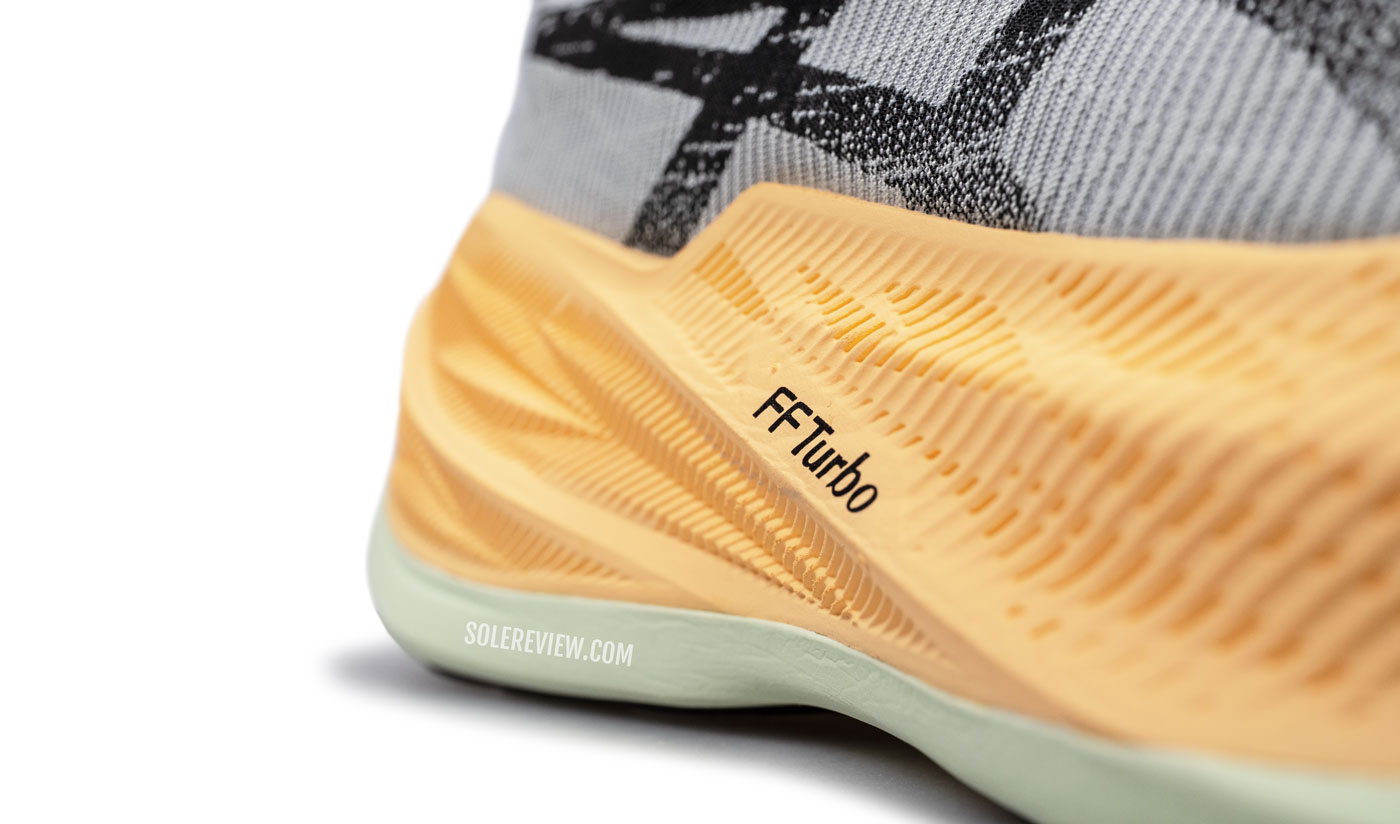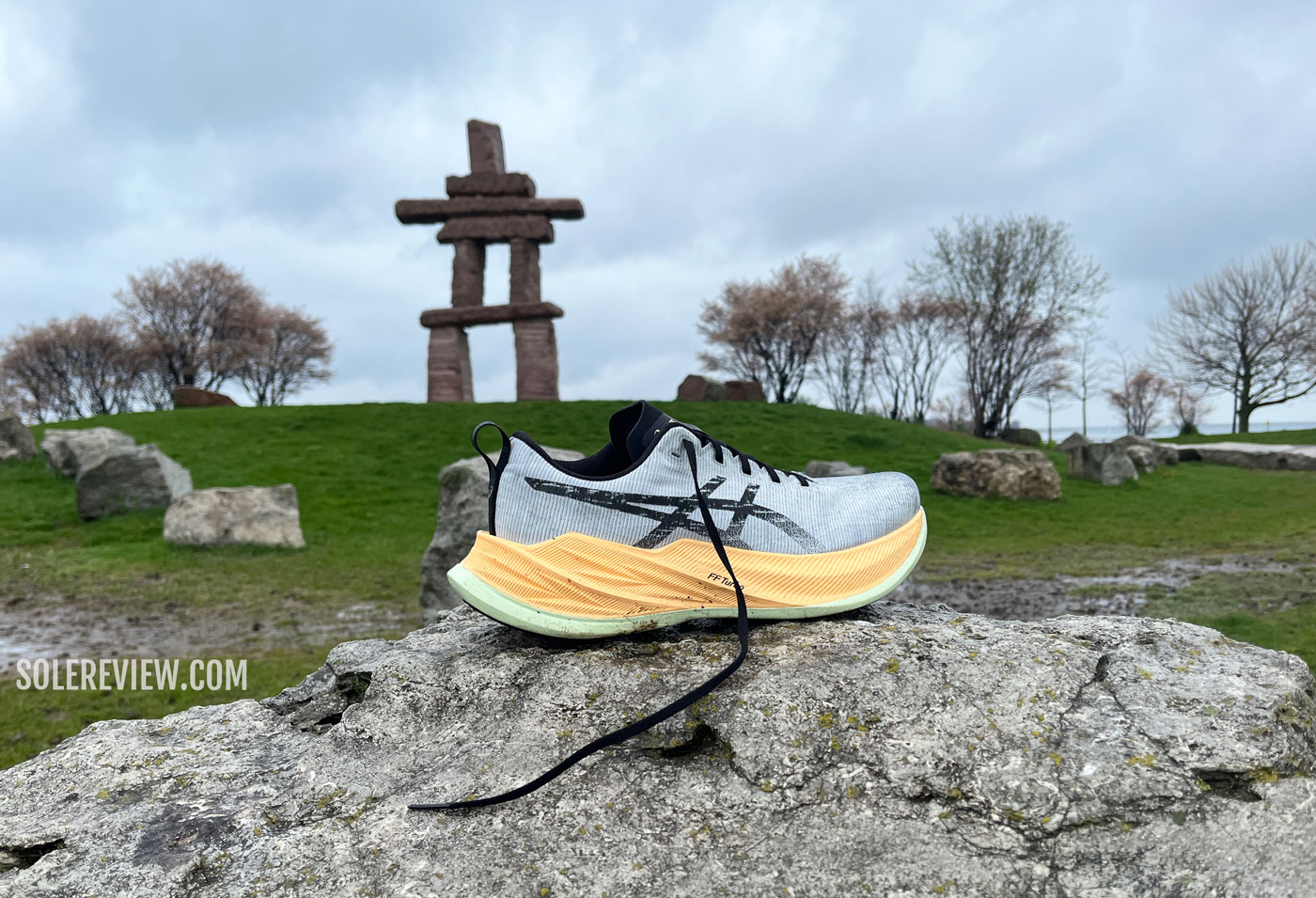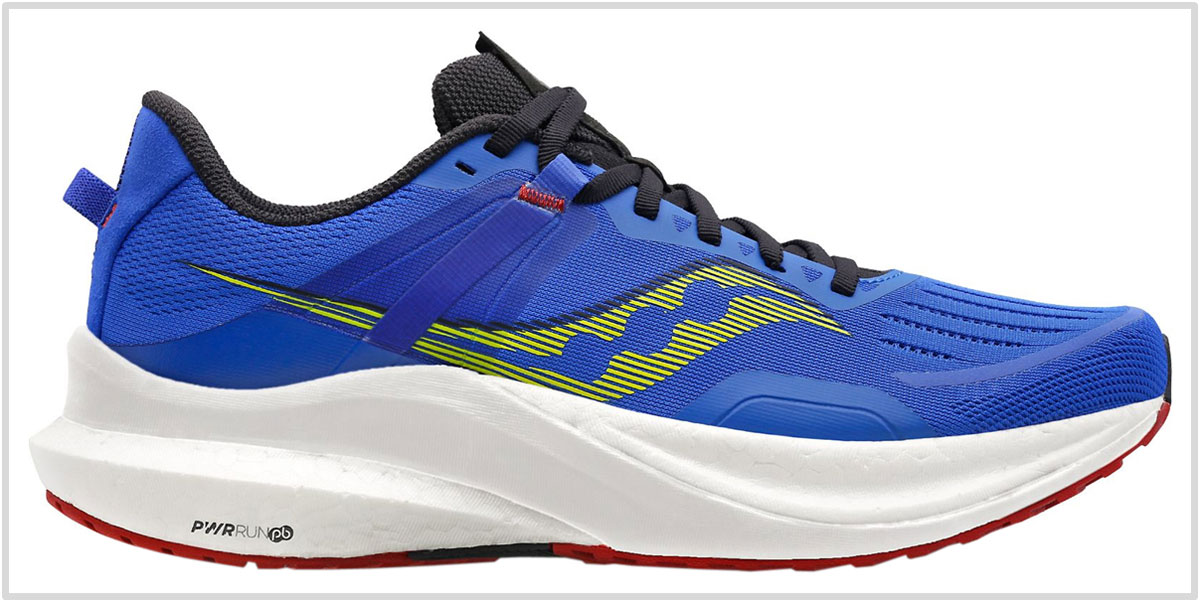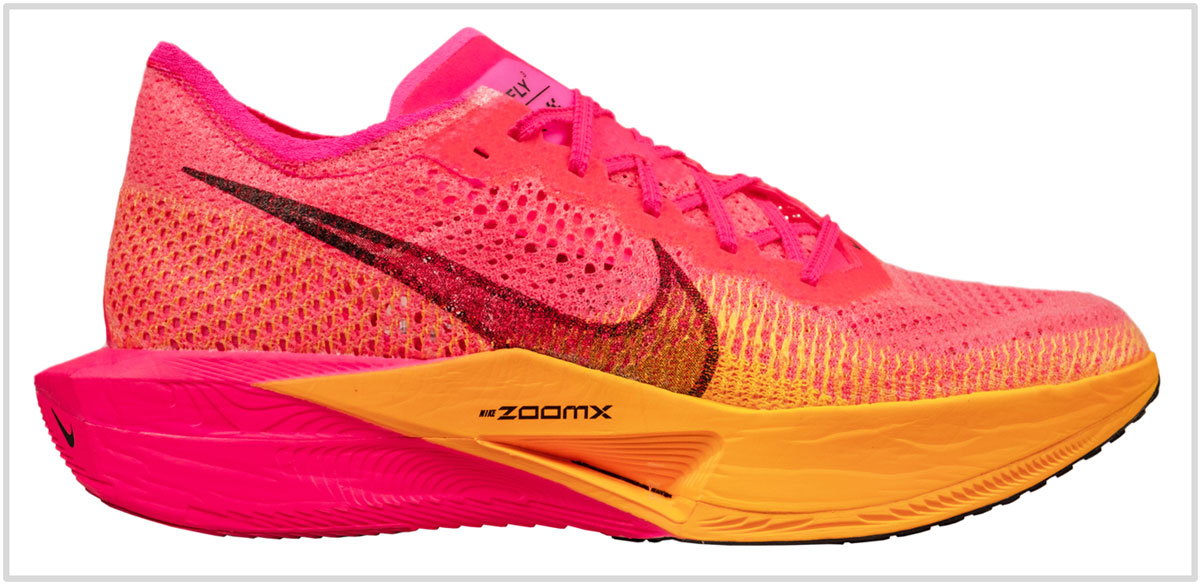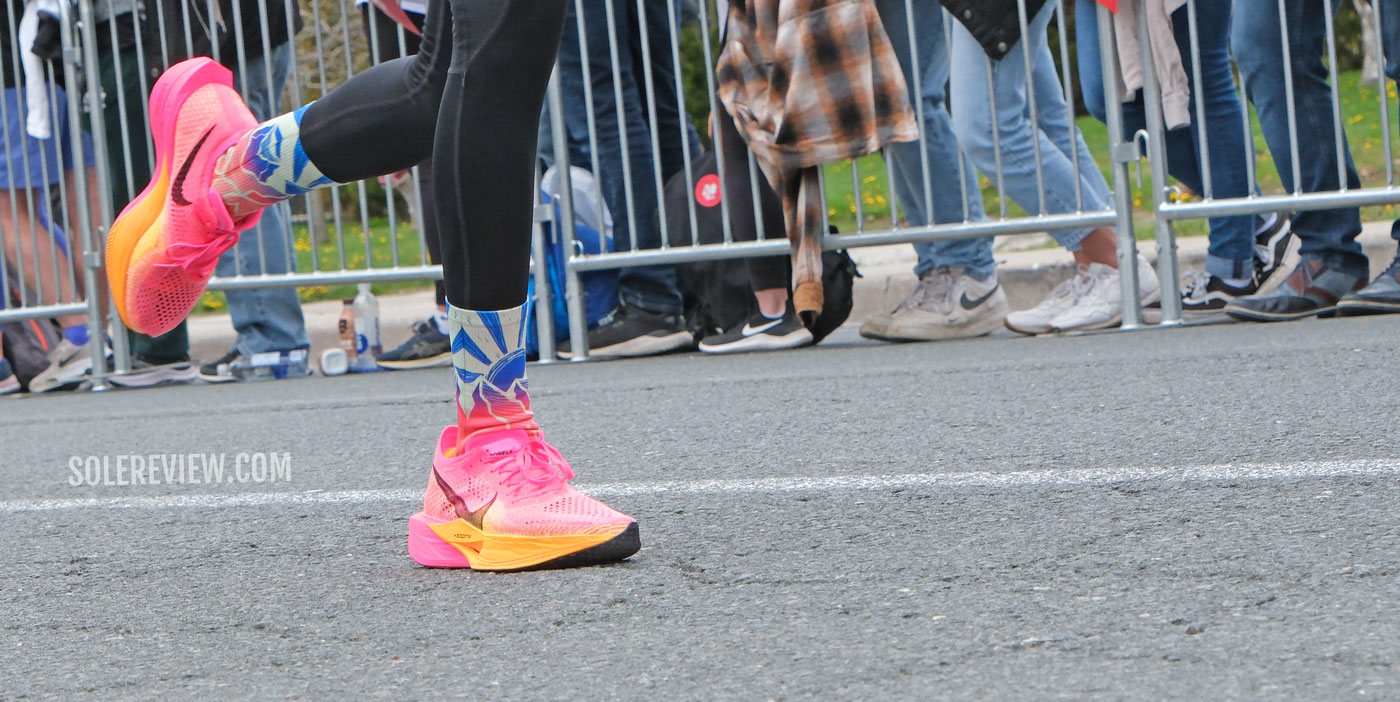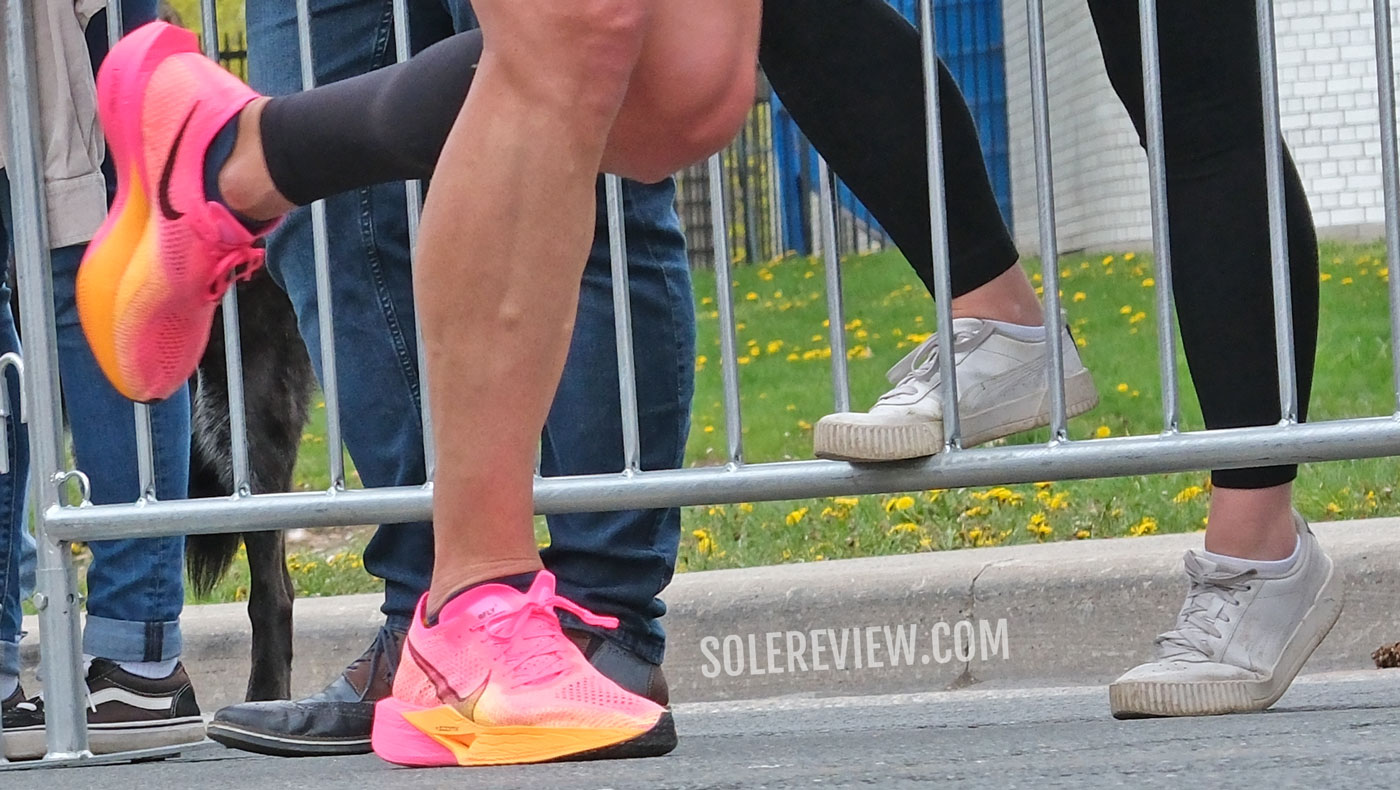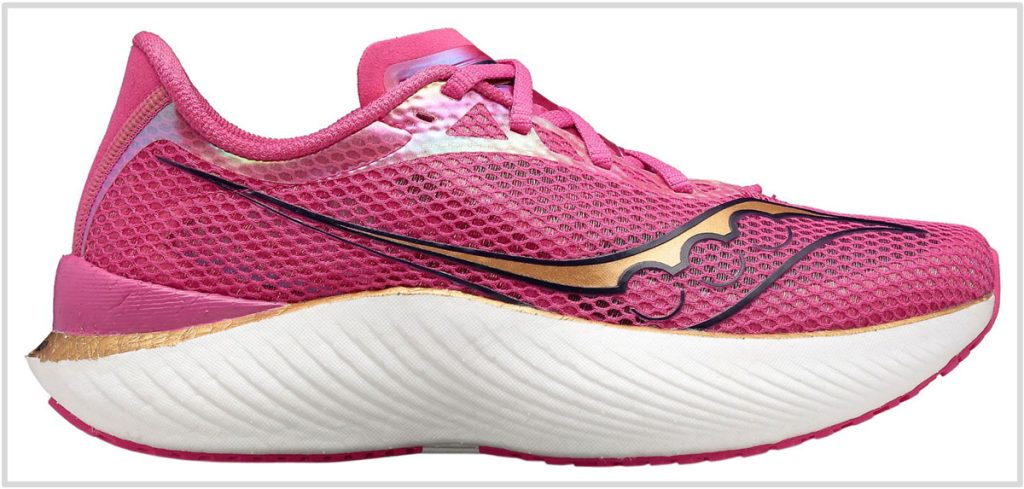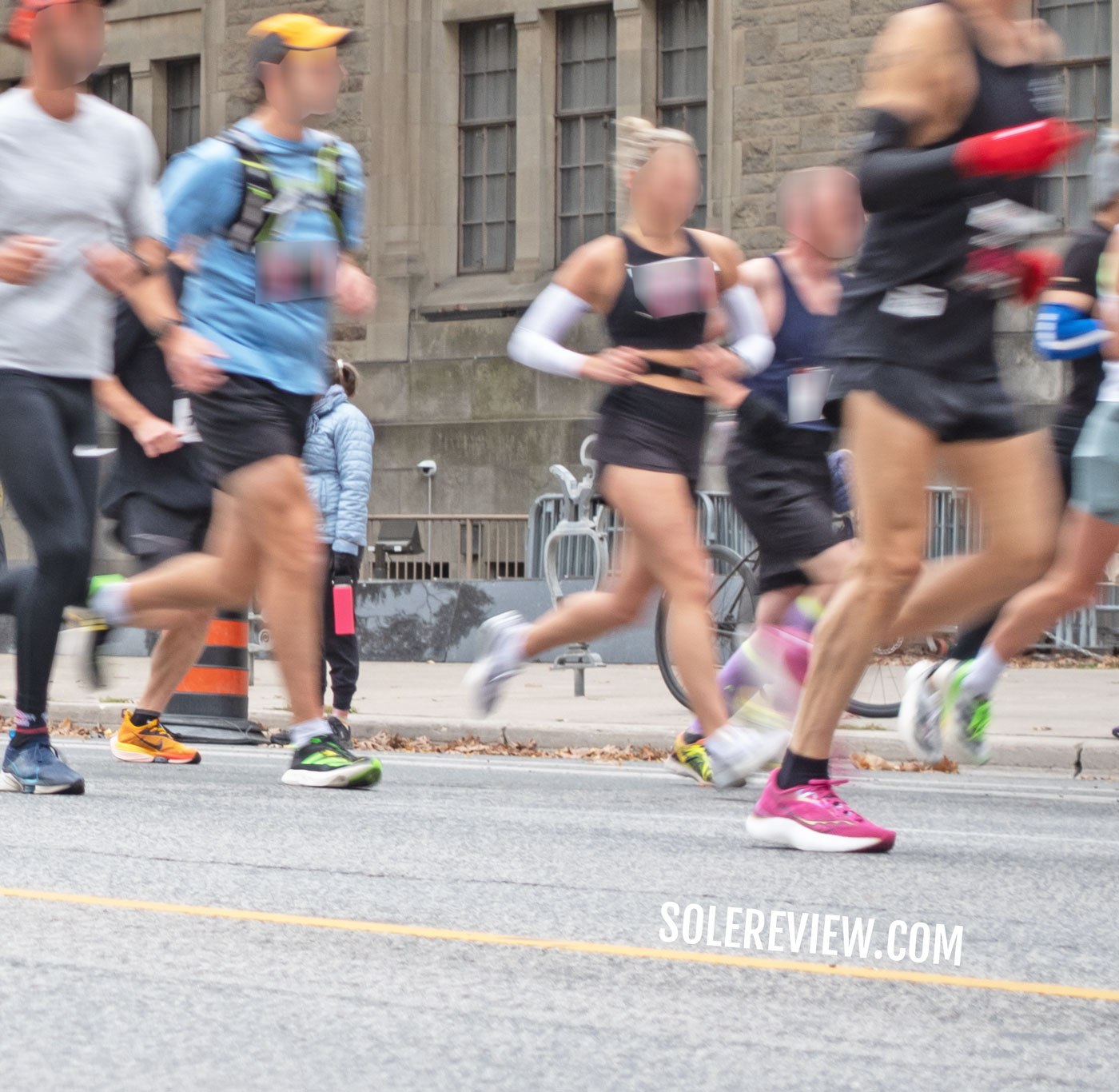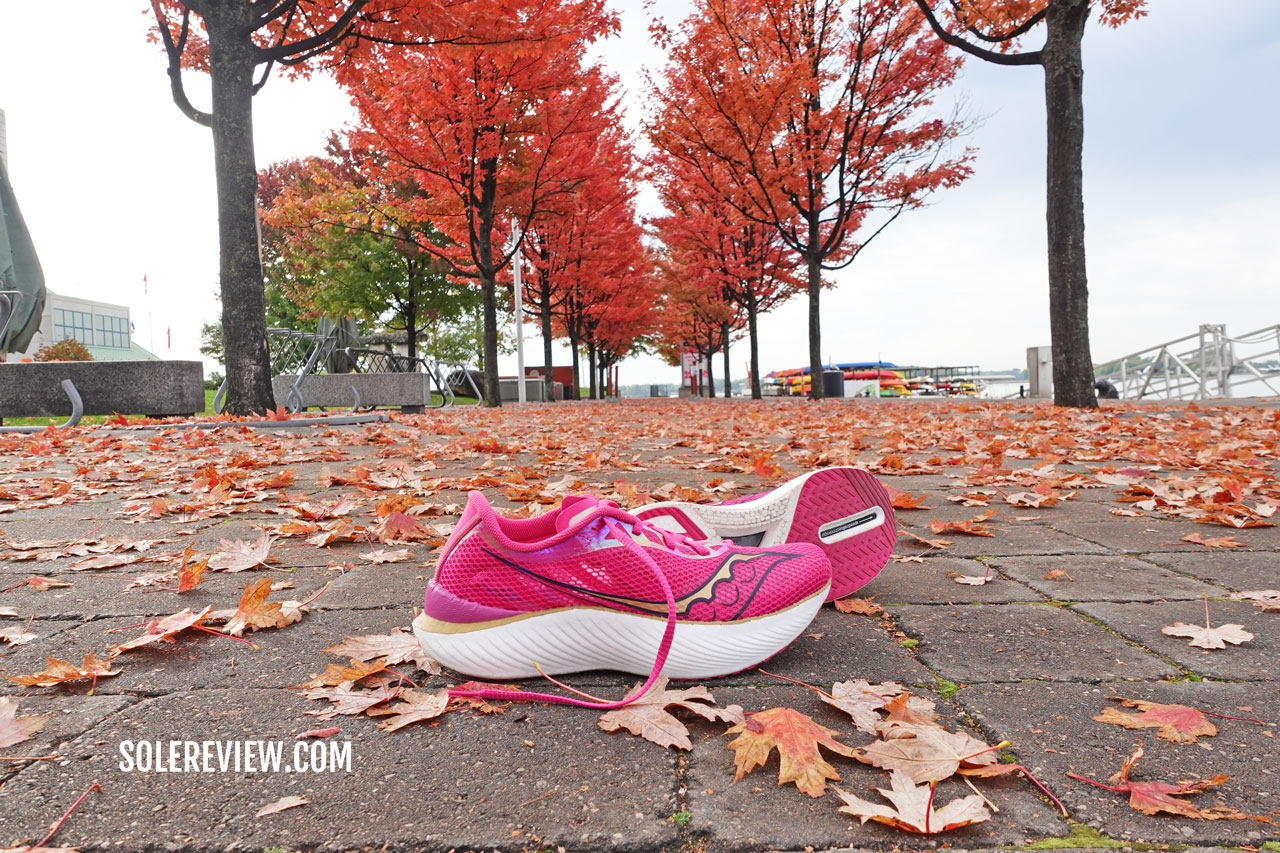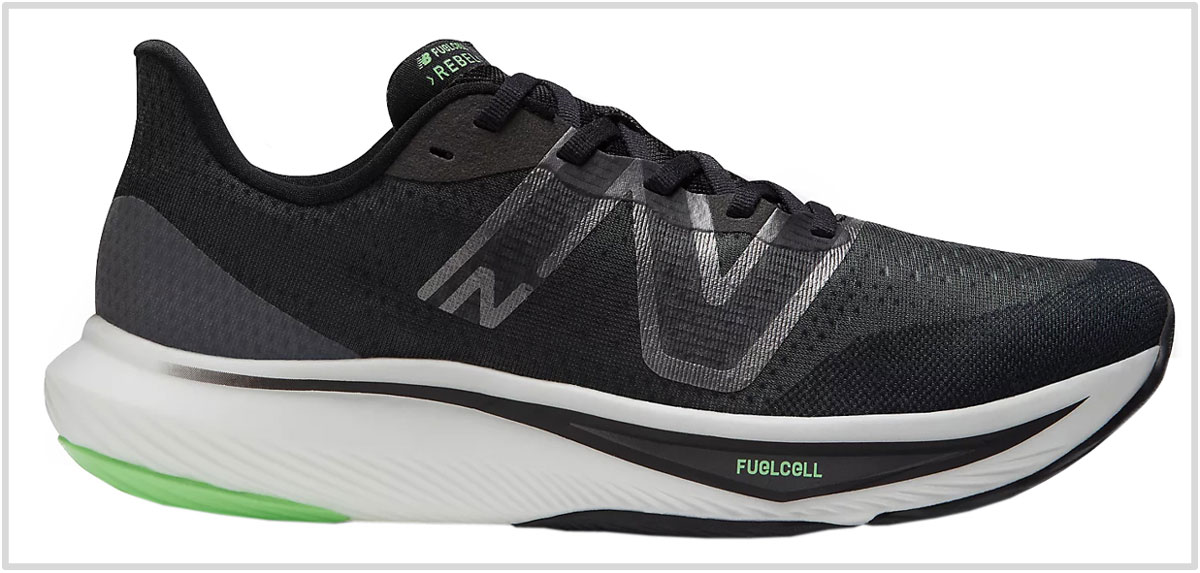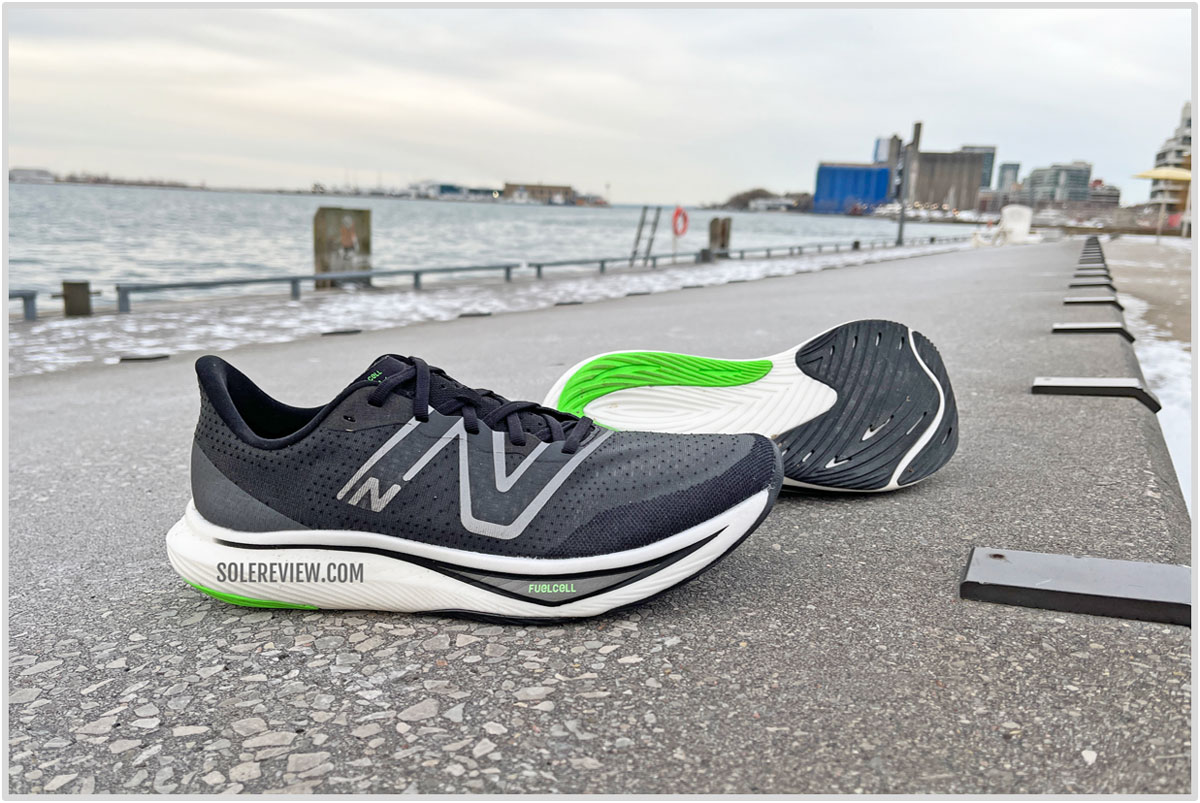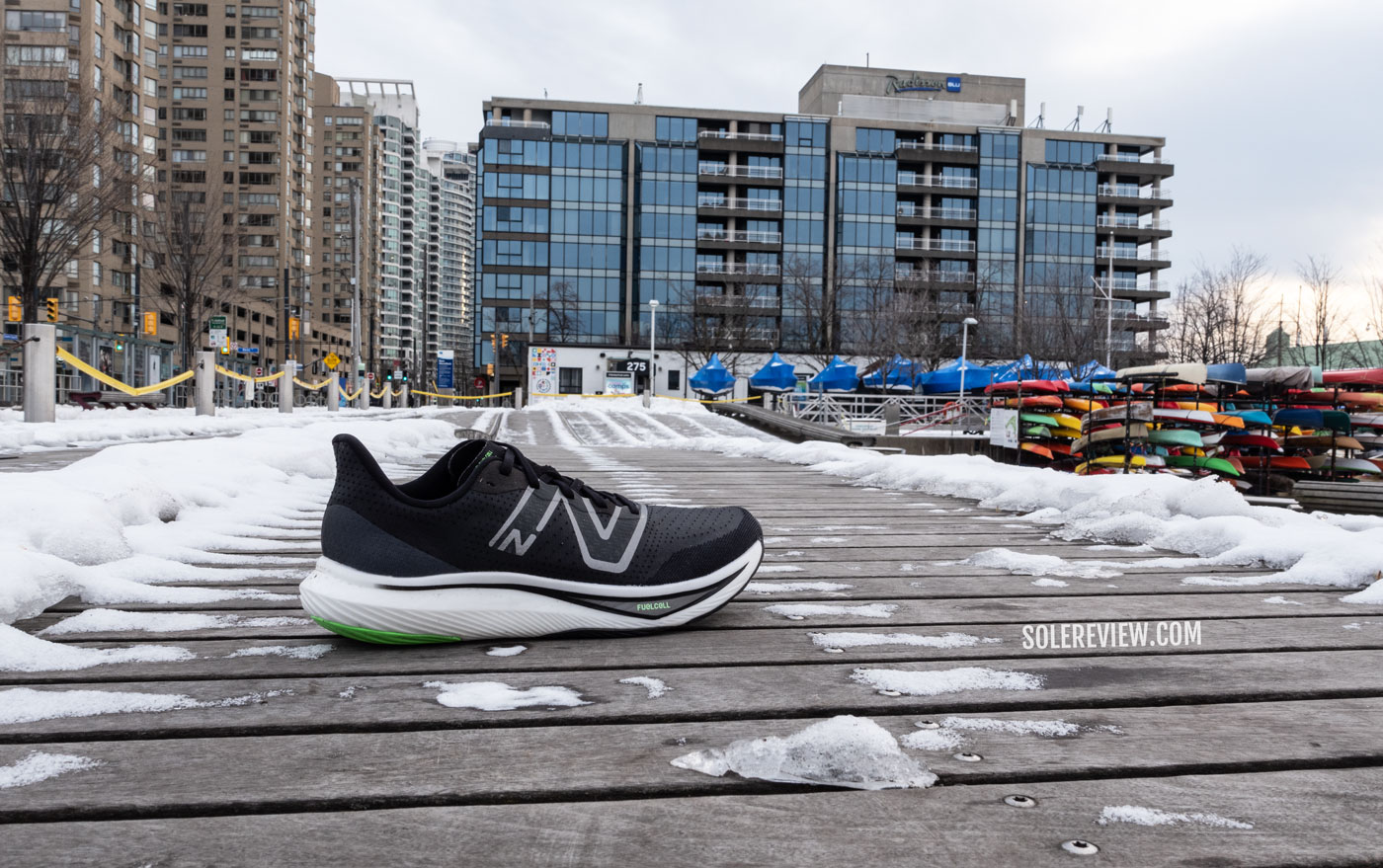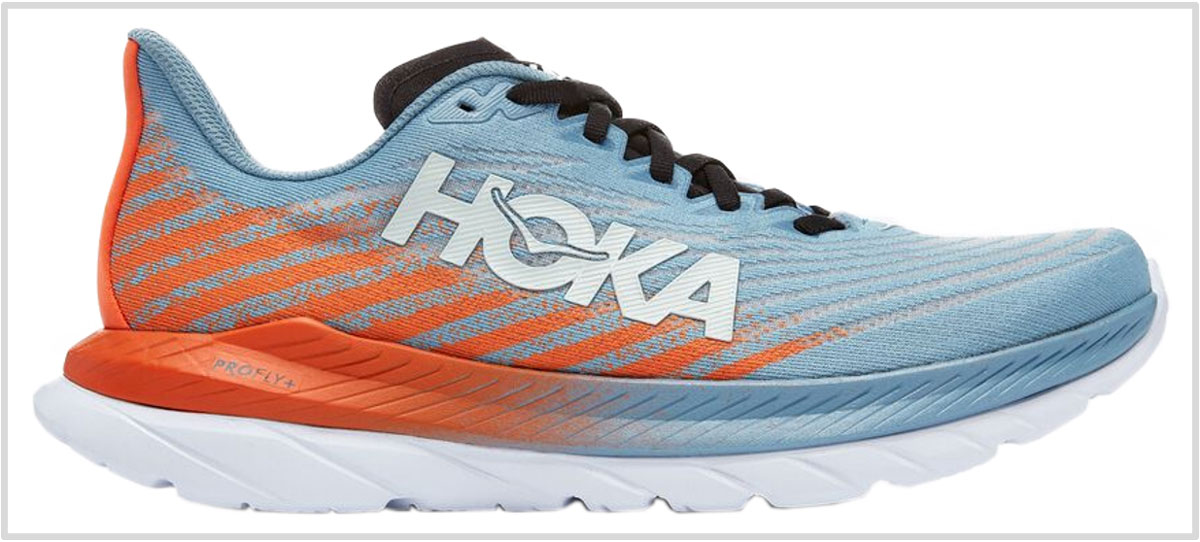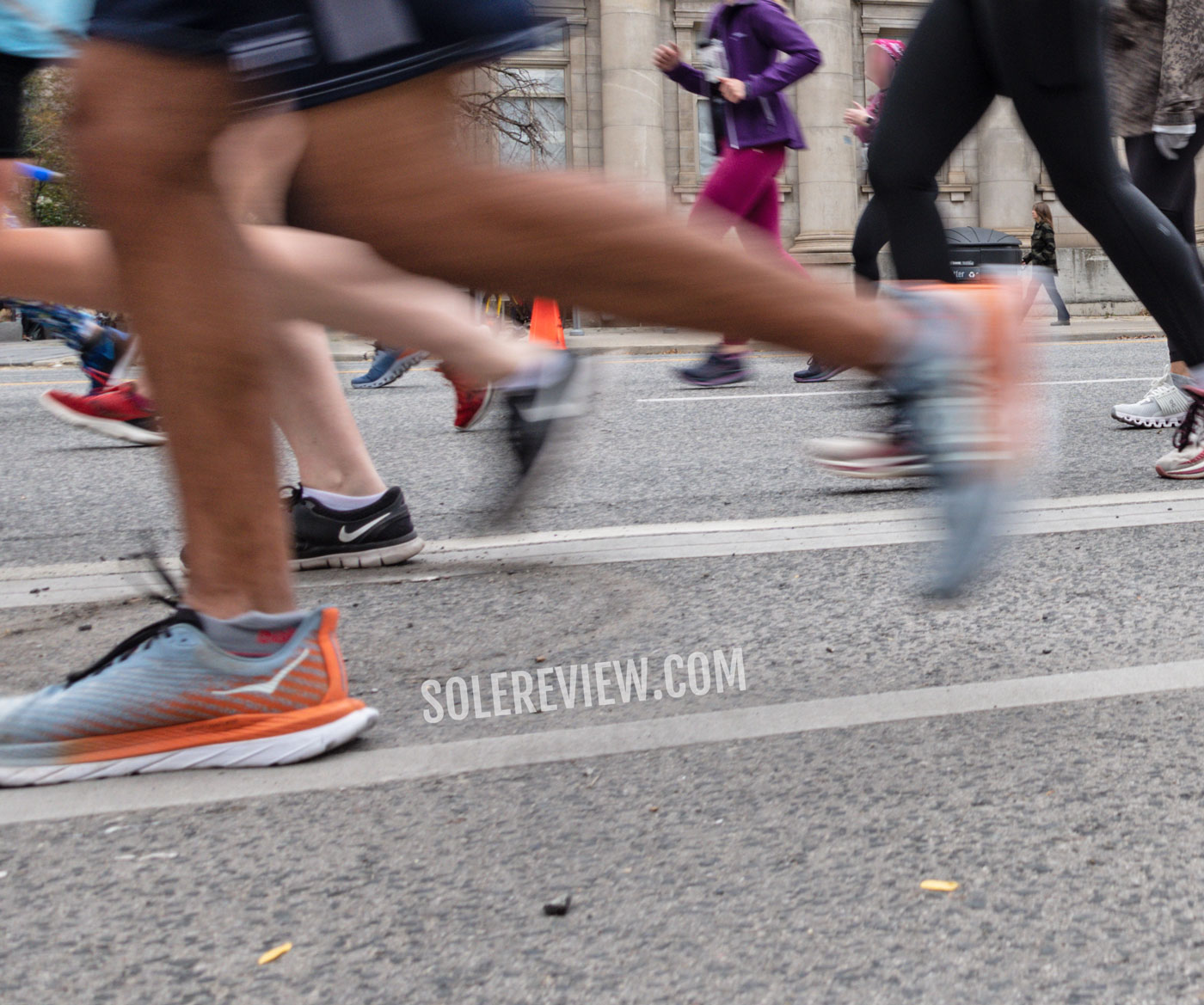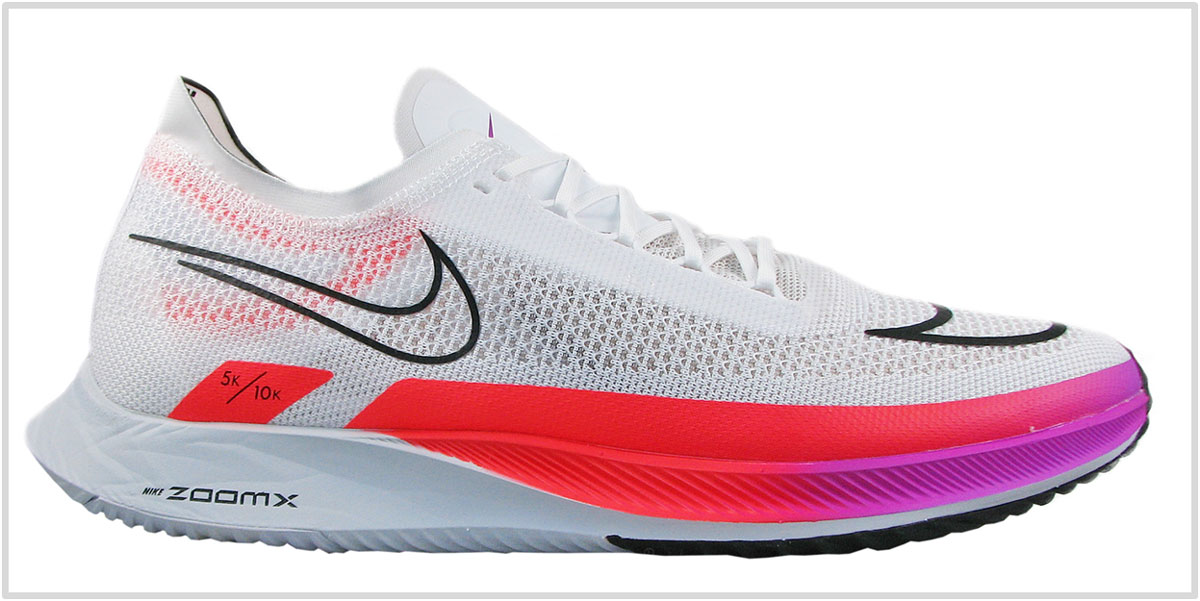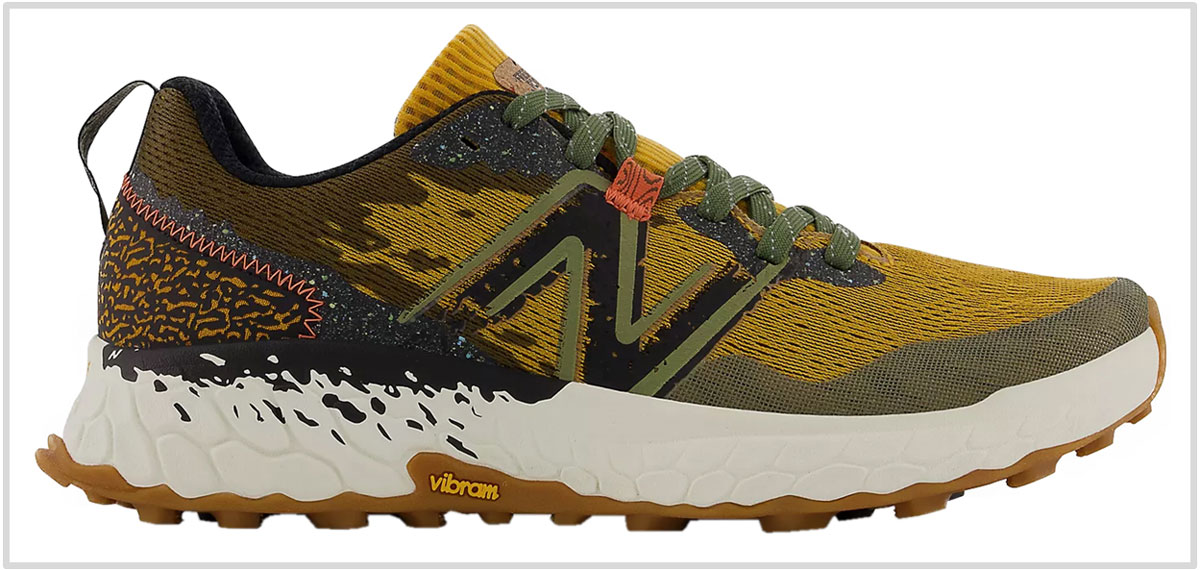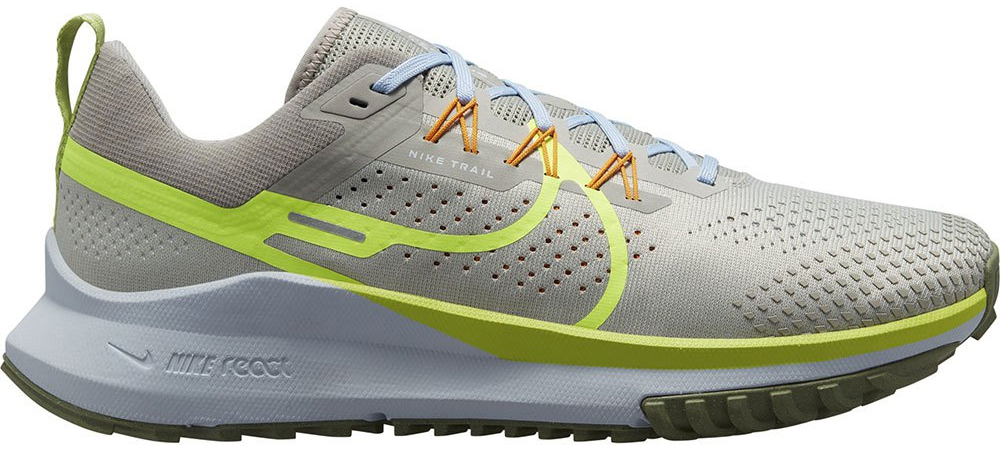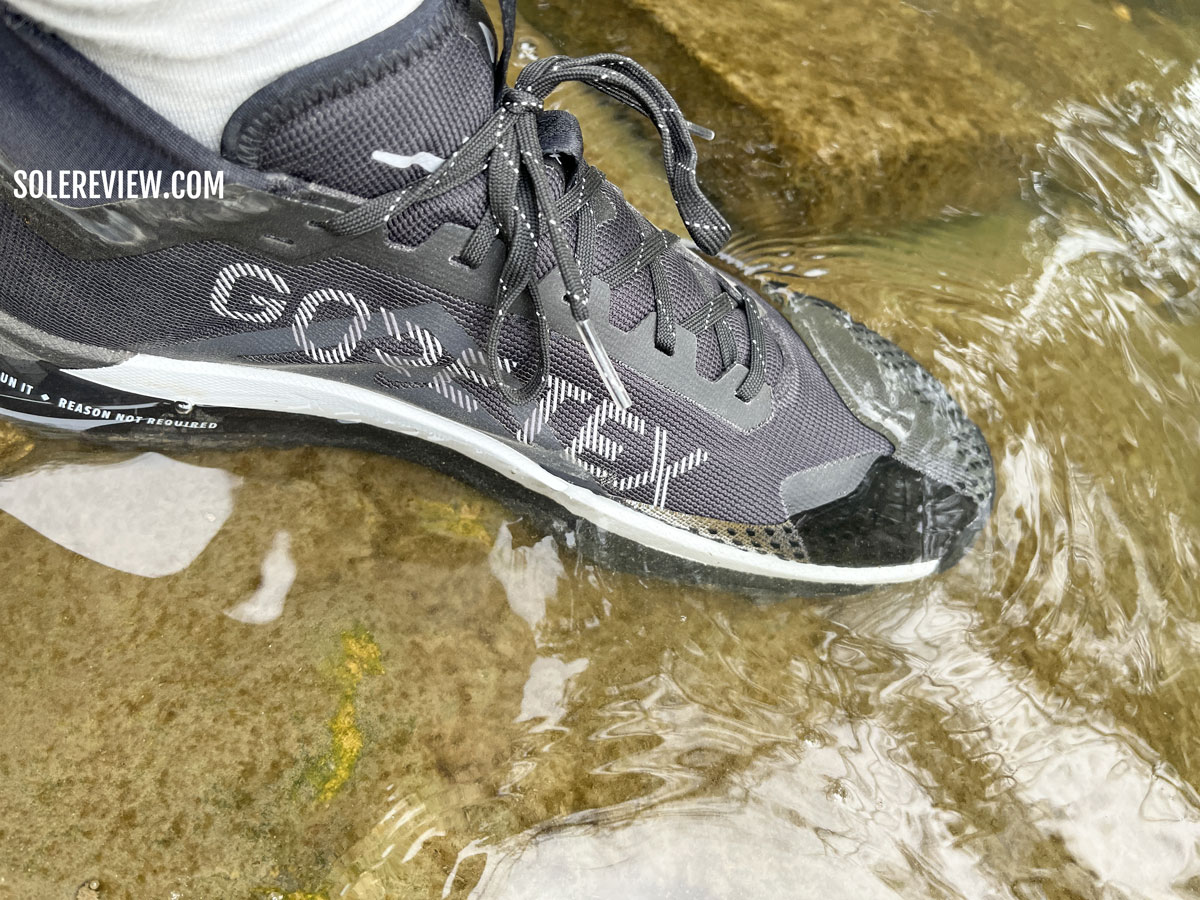This article has been updated with current models for November 2023. The New Balance 1080V12 has been replaced with its updated version.
In this product guide:
- 1. Factors to consider
- 2. Our top pick: New Balance 1080 V13
- 3. Max-cushioned trainer for daily runs: Asics Nimbus 25
- 4. Max cushioned trainer for easy runs: Nike Invincible 3
- 5. Max cushioned trainer for tempo runs: Asics Superblast
- 6. Stability running shoe: Saucony Tempus
- 7. Marathon racer: Nike Vaporfly 3
- 8. Marathon racer: Saucony Endorphin Pro 3
- 9. Lightweight tempo trainer: New Balance Rebel V3
- 10. Lightweight tempo trainer: Hoka Mach 5
- 11. 5K and 10K racer: Nike ZoomX Streakfly
- 12. Trail running: New Balance Hierro V7
- 13. Trail running: Nike Pegasus Trail 4
The word ‘comfort’ means different things to different people. Some runners equate a soft midsole with comfort. Others don’t care about how soft the ride is, and instead, use a plush and roomy upper as a yardstick.
At times, running shoe comfort is activity-dependent. Something that works for a 5K run may not be for a marathon – with the opposite being also true.
What is Solereview’s definition of a comfortable running shoe? After all, we’ve reviewed hundreds of shoes and clocked thousands of miles over the last 14 years.
If you ask us, it’s about finding the sweet spot between the different attributes. For example, the midsole should be cushioned with a level of step-in comfort that’s immediately accessible.
At the same time, the upper should (preferably) be made of soft-touch materials for a plush over-the-foot experience. The fit shouldn’t be overly snug or have hot spots.
So which shoes are on this list? Glad you asked.
Along with the ‘safe’ choices like the Asics Nimbus 25 and New Balance 1080 V13, there are other interesting products. Saucony’s innovative stability shoe – the Tempus – combines a novel EVA stability frame with a responsive PEBA (Pwrrun PB) to deliver a comfortable ride, so we’ve featured it here.
The very capable Asics Superblast reserves one of the spots in this guide, and so does the Nike ZoomX Streakfly – it uses the namesake foam to create a soft ride experience for short-distance races.
To make things simpler, we’ve mentioned the recommended use cases before the shoe’s names. After all, a shoe that’s comfortable for speed runs isn’t the same kind that works during high-mileage cruising.
1) Our top pick: New Balance Fresh Foam 1080V13
The New Balance 1080 V13 is an extremely comfortable running shoe that comes into its own during long-distance runs.
Its high-volume midsole helps the 1080 deliver copious amounts of comfort whenever it’s called upon – be it everyday runs or marathon-level efforts. It’s worth pointing out that the newest 1080v13 is noticeably softer and livelier than the 1080 V12.
The softer sections of the blown rubber outsole muffle the hard landings and transitions. This enhances the cushioning experience – and that directly co-relates to the ride comfort.
While the new 1080 no longer has the elastic knit upper from past version, the interiors fit true-to-size with an adequately spaced toe box. Should a runner need more space, the 1080V3 is also available in different widths.
2) Max-cushioned daily trainer: Asics Nimbus 25
While the Nimbus 25 has been completely redesigned from the ground up, it continues to be an extremely comfortable running shoe – more so than the Nimbus 24. Making that happen is the thick and wide midsole with stack heights of 41.5 mm (rear) and 31.5 mm (forefoot).
Our in-depth feature has everything that needs knowing about the latest Nimbus.
Removing the visible Gel from the heel and filling the gap with foam makes the Nimbus 25 more neutral than before. There are two other things that the Nimbus 25 does differently (and arguably, better) than the 24.
The first is the thicker forefoot which makes the cushioning comfort more balanced between the heel and forefoot. Unlike the Nimbus 24, the Nimbus 25’s forefoot comfort feels substantial. Secondly, the relatively inflexible midsole has a rocker profile that makes it easier for the forefoot to roll off.
Except for the tongue, the upper isn’t stretchy, but the fit runs true to size. It is very warm, however, and that is bothersome in hot weather. Optional 2E (wide) and 4E (extra wide) widths are also available.
3) Max-cushioned trainer for easy runs: Nike Invincible 3
When we reviewed the first edition of the Invincible Run, we said that it had the cushiest ride of all the shoes we’ve had the pleasure to wear-test.
The Invincible 3 has arrived with several updates, but our opinion stands – the Nike Invincible 3 is an extremely comfortable shoe. That feat is made possible by the humongous PEBA foam midsole (ZoomX) that’s not only thick but also ultra-wide under the heel and forefoot. Our detailed review is here.
Two changes on the Invincible 3 that make it firmer than the last two editions.
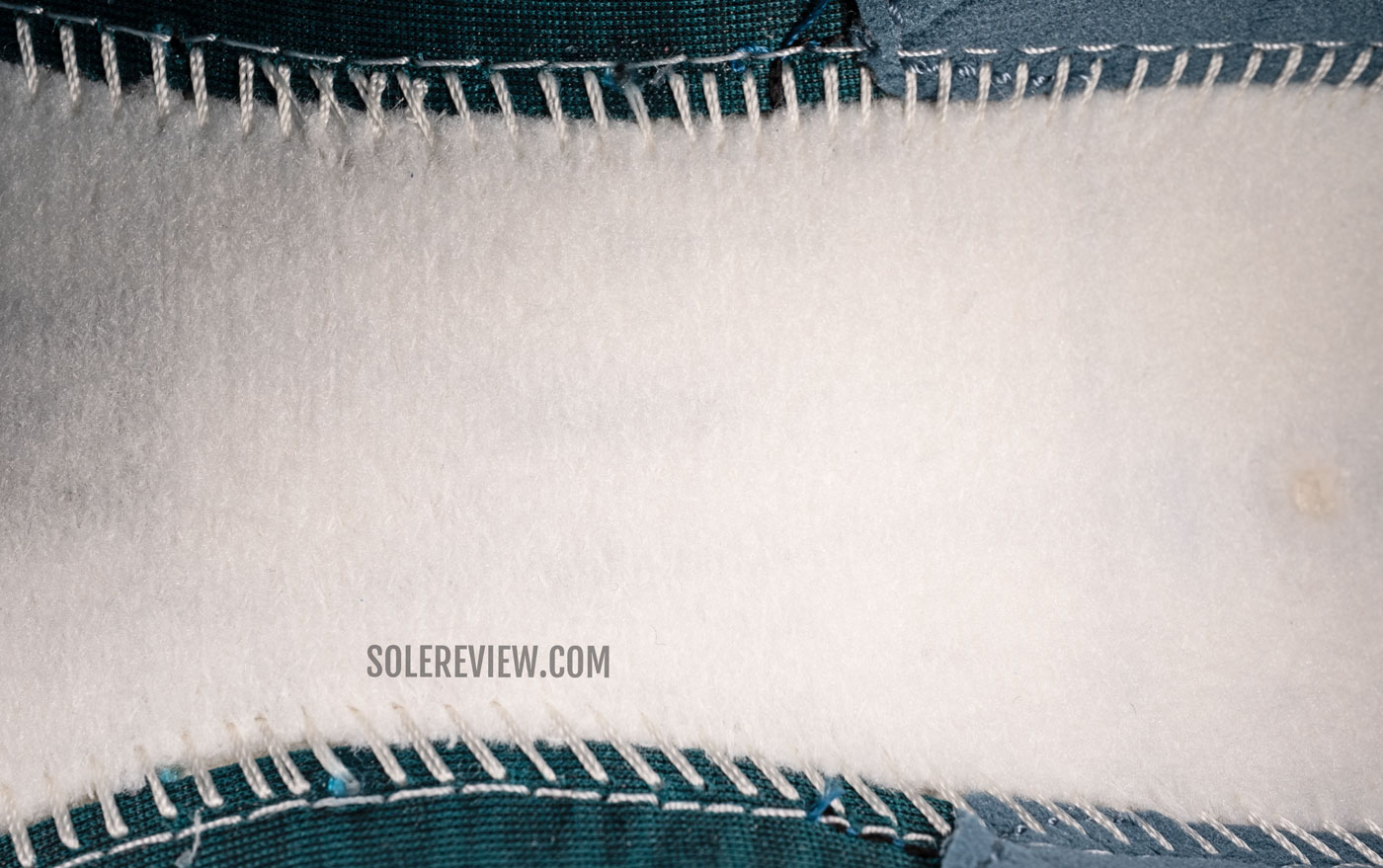
The Invincible 3 gets a fabric lasting covering the midsole – something that the V2 did not have. As a result, the cushioning is slightly firmer.
The first update is the addition of a textile lasting on top of the midsole. The V1 and V2 did not have this, so it was easier for the foot to tap into the ZoomX cushioning. The other update is the new midsole with scoops on the side – this dials up the firmness as well.
Other than that, the underfoot experience is ridiculously well-cushioned. The Invincible isn’t the best shoe for high-paced runs, but it’s game for everything else. In short, easy runs and casual-wear uses are its wheelhouse.
Unlike some Nike running shoes, the upper is spacious and packed with interior comfort. Unfortunately, optional widths are unavailable.
4) Max-cushioned trainer for tempo runs: Asics Superblast
At the time of publishing this article, there’s nothing quite like the Asics Superblast. In many words, our detailed review explains why.
The Asics Superblast offers the ride comfort of a high-end marathon racer, but without a plate. Instead of a plate, Asics uses a firmer foam layer over the outsole.
Most of the midsole cushioning comes from the soft Flytefoam Turbo foam – the same material that’s used on the Asics Metaspeed. There’s more than ample cushioning available for marathon distances. The Superblast can also be your daily trainer, no problem at all.
The transition quality benefits from the firmer base under the Flytefoam Turbo, as well as the rocker-shaped forefoot. Despite the extremely tall stack heights (45.5 mm and 37.5 mm, rear and front), the Superblast manages to feel peppy enough.
The upper has a snug fit with a true-to-size interior.
5) Cushioned stability trainer: Saucony Tempus
Generally speaking, stability running shoes have a firm ride that do not feel as comfortable as their neutral counterparts. The Saucony Guide 15 and Brooks Adrenaline GTS 22 are good examples.
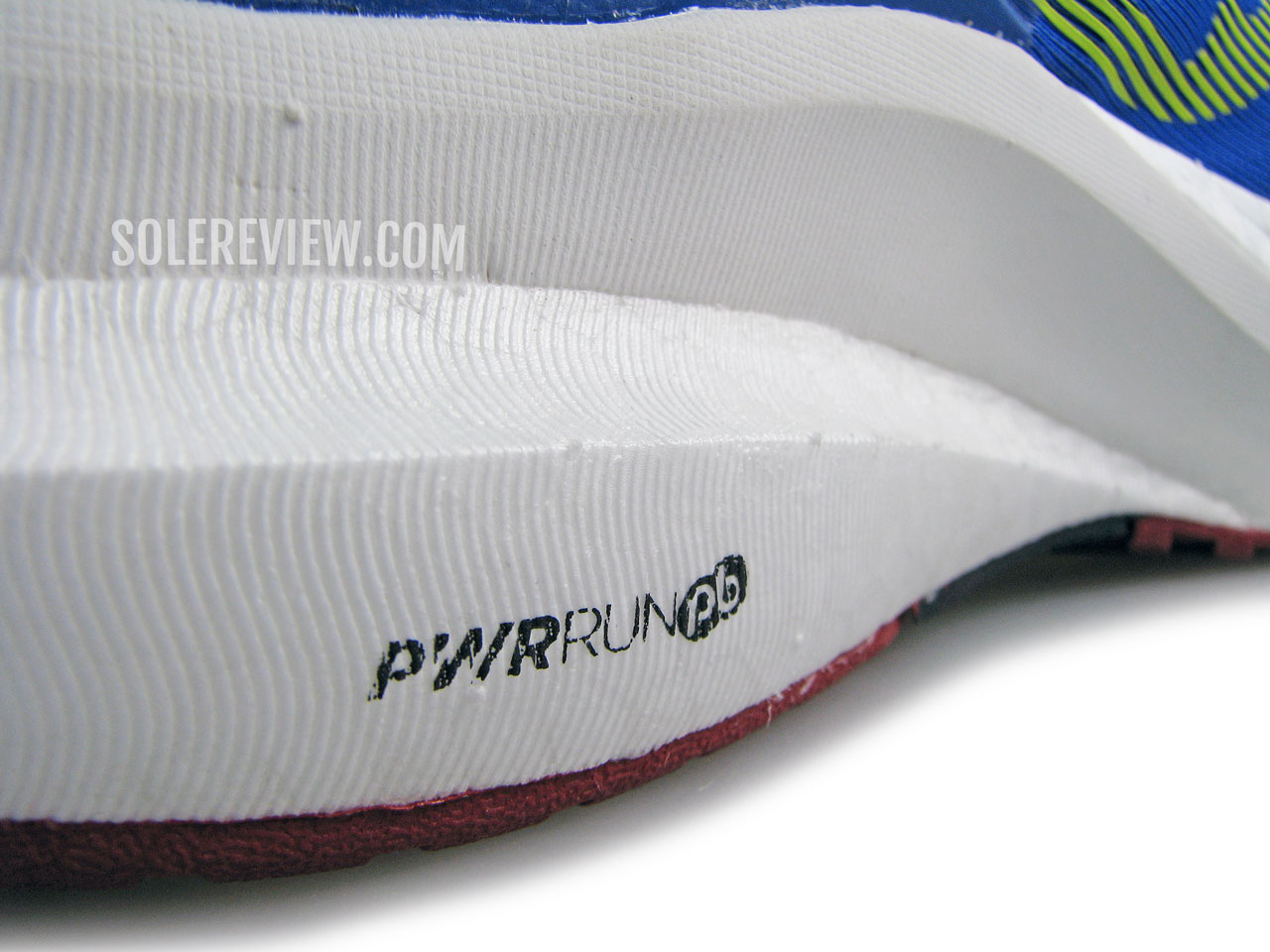
The Tempus combines an EVA frame with a softer Pwrrun PB core – the same material that’s used on the Endorphin Speed and Pro.
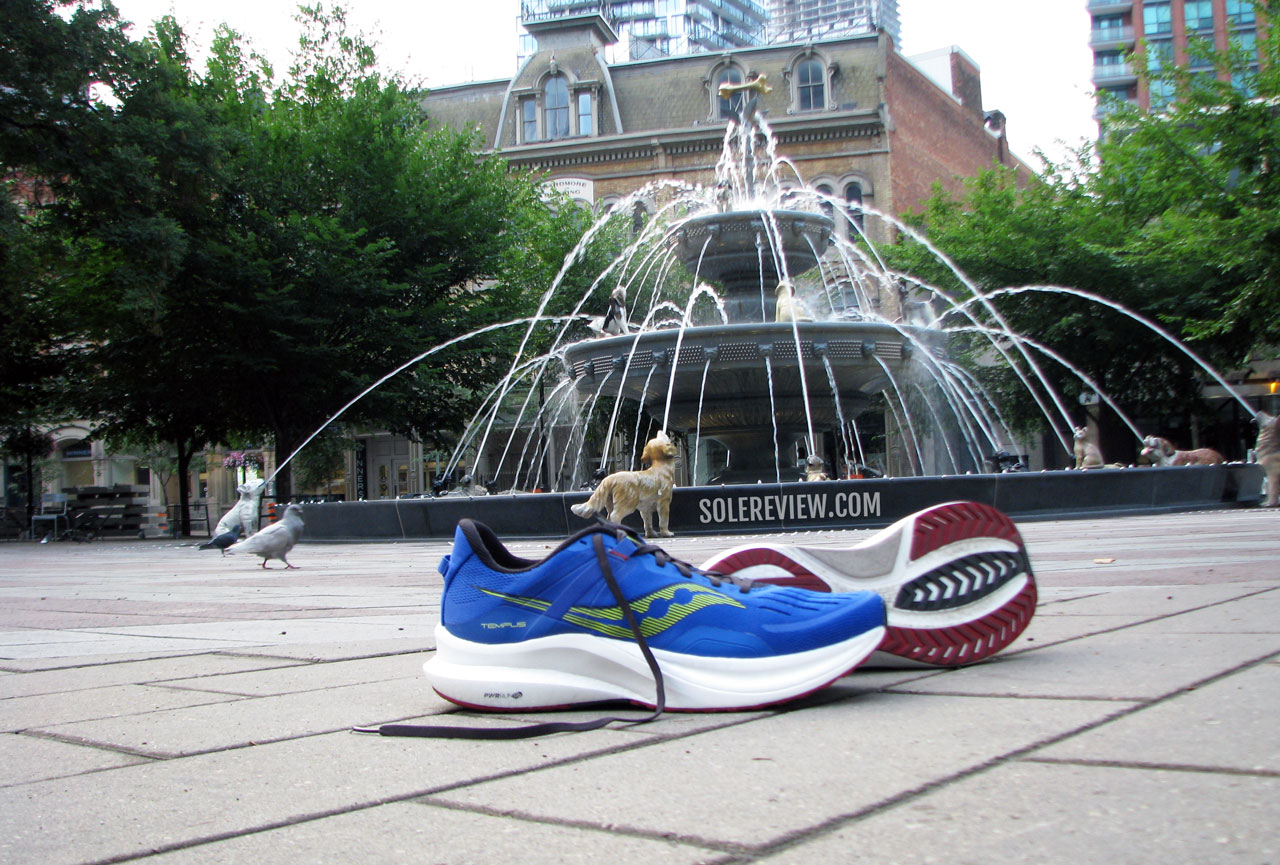
Well, the Saucony Tempus isn’t your regular stability trainer. A firm EVA frame is interlocked with a soft and responsive midsole made of Pwrrun PB – the same PEBAX foam that powers the Endorphin Speed and Pro. Only a thick EVA foam insole separates the foot from the soft midsole.
The Tempus’s upper is mirrored on the likes of the Kinvara – which means that the interiors are extremely breathable and use soft-touch materials for comfort.
If we haven’t already made it clear, here’s the gist – the Saucony Tempus is a stability running shoe with a high level of ride comfort for everyday runs and long-distance training. Our ultra-detailed review covers everything that you want to know about the Tempus.
Category 2: Comfortable marathon racers and low-profile trainers
6) Comfortable marathon racer: Nike Vaporfly 3
What’s made the Vaporfly and its kind so successful is a ride character that blends long-distance comfort with a responsive snap.
The Carbon plate inside the midsole acts as a springboard as well as a transition tool. Add to that a rocker-shaped forefoot, and the combination makes the Vaporfly comfortable and quick enough for a marathon.
Our in-depth review explains the differences between the Vaporfly 2 and 3, just know that the Vaporfly 3 has a similar ride character as the 2. The only thing we don’t like is the roomy forefoot fit that weakens the connection between the foot and the plated midsole.
The lightweight upper is incredibly breathable. Except for the minimally padded heel collar and tongue flap, the mesh exterior is mostly porous. The fit is snug and true to size.
7) Comfortable marathon racer: Saucony Endorphin Pro 3
For slightly less money than the Nike Vaporfly Next%, here’s another equally comfortable marathon racer.
That would be the Saucony Endorphin Pro 3 – an ultra-cushioned racing shoe that combines a Carbon plate with a voluminous PEBA foam midsole. The result is, as one may expect, somewhat predictable.
Much like the Vaporfly, the Endorphin Pro produces a soft and springy ride with a dual purpose – be comfortable over longer distances, while delivering a fast and lightweight ride experience.
The Endorphin Pro 1 and 2 were excellent marathon racers, and so is the Pro 3. It’s been redesigned from the ground up, and now has cut-outs for a glimpse of the Carbon plate.
Even though the Endorphin Pro 3’s claim to fame is the soft and transition-friendly midsole, let’s not discount the upper. This shoe has the most breathable upper of this year, and that’s made possible by the vented tongue and generously ventilated mesh.
8) Comfortable lightweight trainer: New Balance Fuelcell Rebel V3
There are many reasons why we love the Fuelcell Rebel V3. Not only does it offer an exceptionally cushioning-to-weight ratio, but the Rebel V3 also shines as a tempo trainer that doesn’t feel harsh at all.
A quick look at the midsole tells us why. The Rebel uses the lightweight and responsive Fuelcell foam from the higher-priced SC Elite, but without any internal plate.
On the road, that translates into high levels of ride comfort, thus making the Rebel V3 the ideal 10K trainer. Our in-depth review explores the various capabilities of this lightweight tempo trainer.
There were upper-related durability concerns on the Rebel V2, but the V3 has a brand-new upper with a stronger mesh and an inner sleeve – both of which were absent on the Rebel V2. The fit is true-to-size and conforming.
9) Versatile lightweight trainer: Hoka Mach 5
The Hoka Mach 5 fills the void that the Nike Pegasus Turbo left a few years ago. Who knew that a low-profile midsole with a dual-density foam setup could be so versatile?
The ‘Mach’ in the shoe’s name is accurate, but doesn’t paint the entire picture. Sure, the Hoka Mach 5 is an excellent tempo shoe for fast-paced training, but it’s capable of a lot more.
For example, the Mach 5 is comfortable enough for everyday runs and long runs. The Hoka Mach 5 can go up to a half-marathon without beating up the foot.
There’s plenty of cushioning available in this lightweight trainer; the heel and forefoot stacks are 30 mm and 25 mm respectively.
The upper design and fit is typical for a shoe in this category. The Mach 5 has a snug and breathable upper that fits true to size.
10) Comfortable 10K racer: Nike ZoomX Streakfly
Our in-depth review made it clear that while the ZoomX Streakfly isn’t the best running shoe for short-distance races, it is certainly the most comfortable one.
This 6-ounce shoe’s midsole is made entirely of ZoomX foam, so that translates into a soft underfoot experience. Don’t worry – the midsole isn’t overly thick, so this shoe keeps up at medium-fast paces of 4:00 min/km or so.
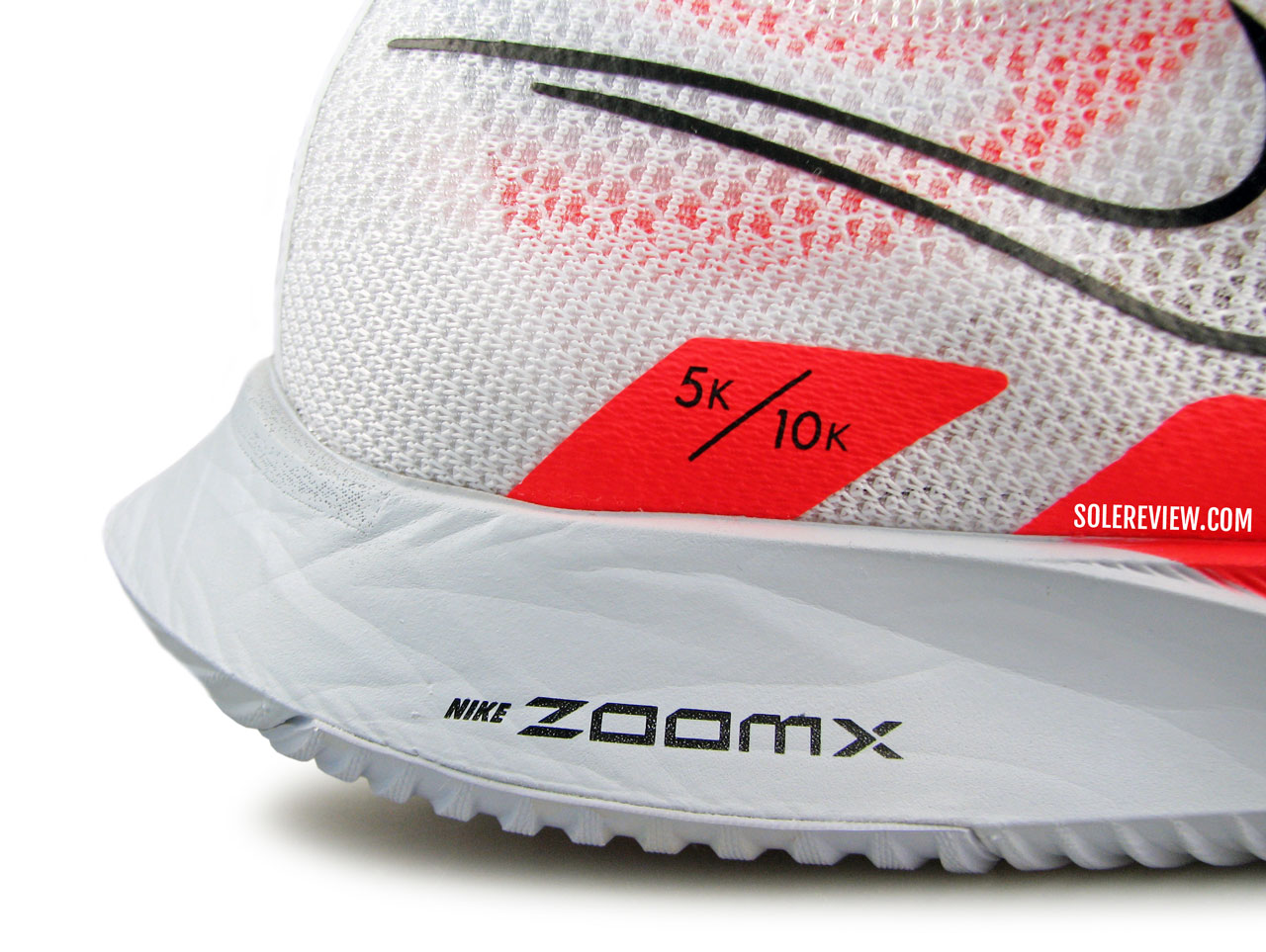
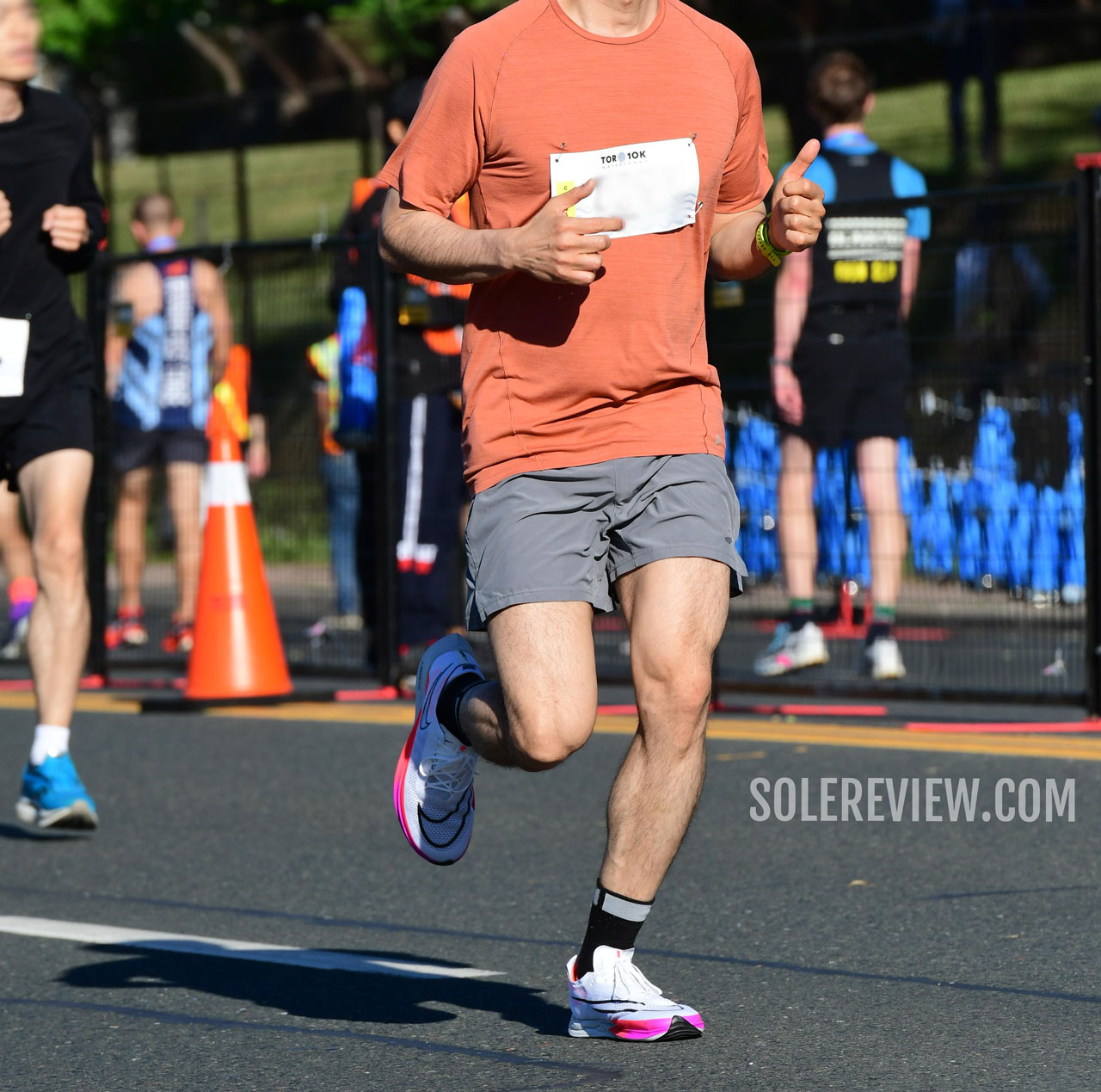
The Streakfly during a 10K race.
If you’re looking for a lightweight tempo trainer to finish your 10K runs in, the Streakfly is worth considering. The lightweight and breathable upper also disappears on the feet during runs.
Category 3: Comfortable trail running shoes.
11) Comfortable road-trail hybrid: New Balance Fresh Foam Hierro V7
Trail running shoes are often found lacking in ride and fit comfort.
The nature of the terrain requires a stiff ride for stability and protection. The upper of a trail shoe is usually narrow to prevent the foot from sliding inside.
While the said feature set works for technical trails, runners may find the cushioning comfort lacking over longer distances.
This is where a trail running shoe like the New Balance Hierro V7 adds value. Its thick Fresh Foam stack adds ride comfort to your high-mileage trail workouts while possessing all the required performance bits.
Under the cushy midsole is an aggressively lugged Vibram outsole for reliable traction. The upper has an accommodating fit with soft interiors, thus resulting in a high level of comfort.
The tightly woven mesh, inner sleeve, and padded entry work together to make the fit secure. The Hierro 7 also retails in three widths for an adjustable fit.
12) Comfortable trail shoe: Nike Pegasus Trail 4
The Nike Pegasus Trail 4 isn’t a serious trail running shoe. That said, it excels as a road-trail hybrid – a running shoe that’s comfortable on the road as well as on mild trails.
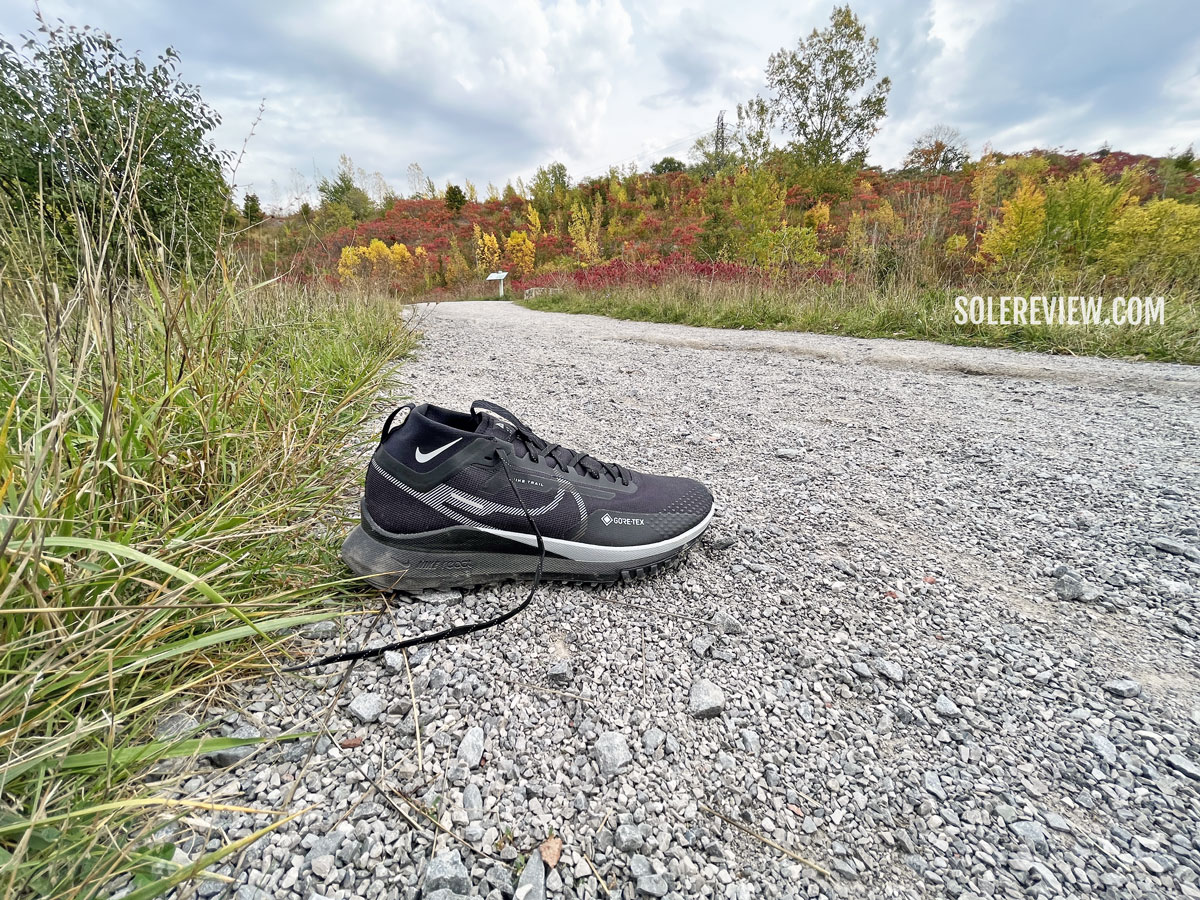
There’s a good reason why this shoe is known as a road-trail hybrid. It’s closer to a road shoe than a serious trail runner. It does best on flat terrain – like this gravel path, for example.
The all-React midsole is as soft as it gets, and while that’s good for ride comfort, it works against the shoe on technical trails.
That being said, if you’re looking for a comfortable running shoe that isn’t afraid of unpaved surfaces, the Pegasus Trail 4 makes a strong case for itself.
There are currently two versions of the Pegasus Trail. The first is the waterproof Gore-Tex version that we reviewed a while ago, and the second is the breathable version without GTX and the faux heel gaiter.
We recommend that you get the GTX variant over the regular Pegasus Trail because of its versatility during rainy seasons and colder weather.
Do you own any of these shoes? Improve this review by sharing your insights – submit a review here.

